Harold Tristram Squire Sculptures-statues at Dungarvon, Mona Vale
- Aboriginal and Torres Strait Islander Readers are advised that this page contains images of deceased persons. Users are warned that there may be words and descriptions that may be culturally sensitive and which might not normally be used in certain public or community contexts.
An April 2020 page on Artist H. Tristram Squire, who settled in Mona Vale at the Dungarvon home in the 1920's, may finally be updated with some of the many works older residents, who were then children, recall being in situ at the premises when they visited 'an old couple - very nice' at Dungarvon. Many recall the interior walls were covered in murals painted by Harold Tristram Squire and his wife Mabel, and the garden filled with statues.
The photos of these works provided on this page are courtesy of the family who bought the property as a deceased estate after Mabel had passed away in 1957.
The property has recently been placed on the market again, leading to a discussion which brought up the long sought for insights into the Squires works at Mona Vale, courtesy of the family that lived there after the Artists.
The grandchildren of Fred Thompson, Larry Loose and Glenys Hargreave (Larry's sister), who kindly sent in these images, explained:
Larry Loose: ''I am Fred Thompsons grandson and spent much of my youth living at 28 Park St. Fred bought the house in the 1950s, I believe at auction. It was in need of a lot of work. Being a carpenter/cabinet maker and many other skills it suited him well. I remember him renovating room by room, adding a laundry and generally bringing it back to its former glory.
As I look at the current picture I recall bamboo along the driveway which wasn’t paved back then, with loquat trees and Chinese gooseberry also. At the end of the driveway was a very large mulberry tree and beside that a large shed which Fred used for storage and woodwork.
There were many statues throughout the property, aboriginals standing by trees, kangaroos, birds etc, I believe but can’t be sure that the cart and bullock from Shaws was originally from there as well.
The picture I have was given to me by mother Gloria. It was part of a mural of a beach scene of Mona Vale. Unfortunately I don’t know who it is or when it was painted but remember it was on the wall in the largest room in the house and the mural took up the whole wall, I believe the rest was in poor condition and needed to be removed or covered over during the renovation.
The house was used occasionally for TV; I remember a commercial being filmed there and of course it was photographed by many.
On the Bayview side was Dr Spence, and at 26 Park St, another beautiful old house, I remember two older ladies lived in and I think there names were Ivy and Violet. I used to go visiting for cordial and cake as a kid.
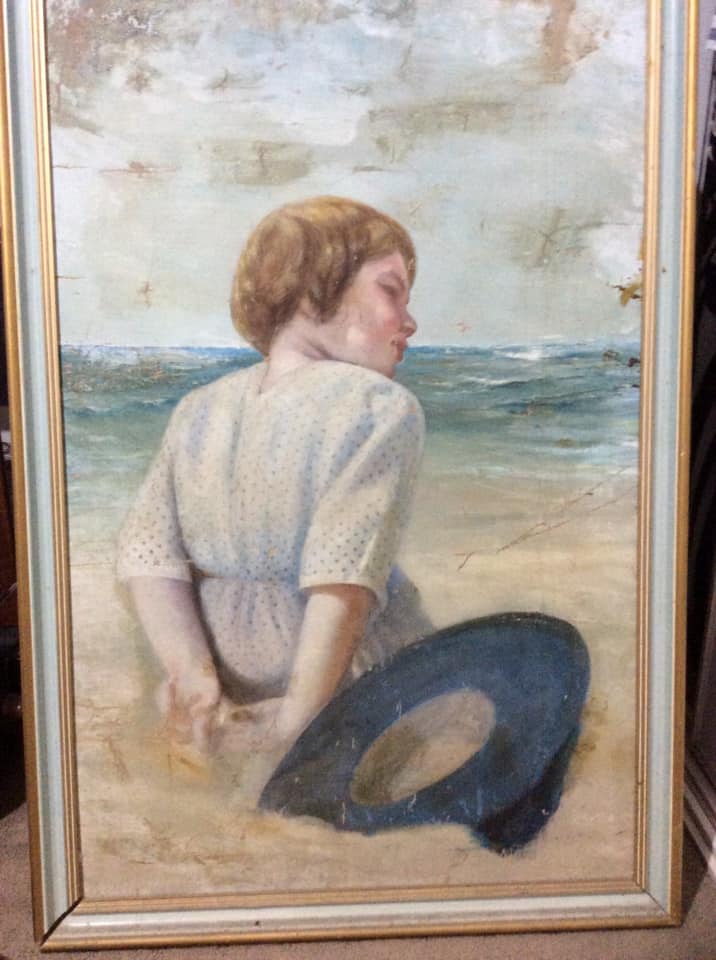
Section from Squire mural in Dungarvon, said to be of Mona Vale Beach. Image courtesy Larry Loose, grandson of previous owners of Dungarvon.
Glenys Hargreave: I have found photos of the statues that were at 28 Park St, and this is probably the majority of them. Have also found copies mum took of the photos of indigenous people. She donated the originals to a museum here in Townsville. I'll post the photos to you. Mum has noted "May have been taken by Squires" about the indigenous peoples photos, so while with the house, we can't be 100% sure.
It is Larry and I in the photos. Larry was born in 1955 and I was born in 1957 so that gives me some perspective about Mrs Squire passing. I was probably about 3 in the photos, just guessing.
Grandad was an amazing man, from the old school, honest and honourable and such a hard worker. Apart from Park Street and a home much much later in Tamworth, he built all their homes. He had built a house in Bayview on his own, the block was so steep that he had to build railway tracks to pulley the building materials up with! On the last trip mum and I took to Sydney together we drove around to visit the family graves and houses stretching back generations. When we stopped to look at the Bayview house the owner, an elderly gent, arrived home. After we explained why we were staring at his house he invited us in and showed all the changes they had made. It was so wonderful. Mum had worked at the Pasadena as a teenager.
Unfortunately mum's younger sister Aileen, at age 14, tragically passed away after diving into shallow water and Grandad went into deep depression as he blamed himself. He stopped building and became reclusive. I'm not sure of the time frame, and would need to check when Aileen died to put it together properly, but Larry was only very young and mum said Larry was a saving grace for Grandad. Aileen is buried at Mona Vale Cemetery.
It was after this that Grandad bought Park Street and they left Bayview.
It must have been in the late 60s that Grandad asked mum and dad if they would move into Park Street to care for it. I think he had rented it for a while and regretted doing so. He had built a house for himself and Grandma at Springwood in the Blue Mountains, when it was all bush. Grandma had a wood stove and when we visited the table was always full of home made cakes, scones, bread etc. Of course it was kids outside to play while the adults talked which was fine with us as we explored the caves and cliffs to the back of Grandad's property. Grandad was also a great 'crooner', played violin, piano accordion, flute, banjo and would have us in stitches pretending to be a monkey pulling crawlies off us. I won't begin describing my beautiful Grandmother Myee, as I understand this is all superfluous to the house but the house certainly brings back so many memories for me and it would be the same for Larry.
I think Grandad bought the house as a deceased estate.''
Mona Vale Cemetery records state Aileen Thompson passed away on January 17 1956. Her internment took place the next day. The widow of Harold Tristram Squire, Mabel Eunice, passed away in 1957. They too were placed in Mona Vale Cemetery.
Colleen de la Mare: Dungarvon was my grandparents’ (Frederick Charles Thompson and Myee Thompson) beautiful family home. Magnificent timber floors, a ballroom with a sweeping internal timber staircase to the upper rooms, quirky artistic touches left by the previous owners, a tiny 3rd floor turret to view the whole of Mona Vale and the seaside. Frederick Thompson was a builder and a stonemason and he repaired a lot of the sandstone on Dungarvon. They owned it for about 20 years from mid 1950’s. Great to still have some historic homes left.
Laurie Ellard: My Grandfather (Mr Thompson),owned it from the 1960's to the early seventies. I do remember staying there several times for my holidays, the previous owner was an artist, from memory !
Harold Tristram Squire was born on October 28th, 1868 in Kangaroo Gully - the birth registered at 'Kangaroo Ground', Victoria, on December 22nd 1868, where his father Tristram Edward Pitfield Squire was Station Master with the Victorian railways. Mabel Eunice Harvey was born 1865 at Caulfield, Victoria to Robert (1814- February 6 1912) and Anne Jane (1826 - March 11, 1916) (nee Seale - also listed in some birth records as 'Mary Ann' - both buried in Brighton Cemetery, Caulfield, Melbourne, Church of England P 54). HARVEY.—On the 4th February, at his residence, Balaclava road, Caulfield, Robert, the dearly loved husband of Anne Jane Harvey. A colonist of 60 years. London papers please copy. Thou hast left us behind In the path of the past. Family Notices (1912, February 10). The Age (Melbourne, Vic. : 1854 - 1954), p. 5. Retrieved from http://nla.gov.au/nla.news-article197399870
Her elder sisters, Beatrice Annie (born 1859 at the same place) and Helen(e) Edith Harvey (born 1856), were both also Artists who lived with them, at least initially, at Dungarvon in Mona Vale.
In 1883 Harold Tristram Squire commenced what would be six years of study at the National Gallery School in Melbourne, which commenced in 1867, and by 1870 was associated with the National Gallery, Australia's oldest Art Museum, founded in 1861.
By 1886 Mr. Squire begins to be mentioned amongst the students exhibiting works:
The pupils of Mr. Short, Mr. Fieghen, Mr. Pritchard and other artists of the city, exhibit works in the north-east corner, together with National Gallery. The best work of the pupils of private teachers is the Nut Gatherers, a figure painting by Miss A. Newcombe. This must, however, be viewed from an amateur standpoint. Messrs. Collin, Thomas and Squires, National Gallery students, show some capital still-life pictures. BENDIGO JUVENILE INDUSTRIAL EXHIBITION. (1886, November 16). The Age (Melbourne, Vic. : 1854 - 1954), p. 6. Retrieved from http://nla.gov.au/nla.news-article196012921
The following year his work receives 'special mentions':
STUDENTS EXHIBITION AT THE NATIONAL GALLERY.
DISTRIBUTION OF PRIZES.
The annual exhibition of paintings and drawings by students in the art classes connected with the National Gallery was opened yesterday by the Premier, who also presented the prizes awarded to the most successful students. The ceremony took place in the main gallery, the eastern end of which was curtained off for the display of the pictures exhibited. The drawings were displayed upon screens at the other end of the gallery. The company present was numerous and representative, and was composed largely of ladies. Mr. Gillies took the chair, and among the other gentlemen present were Sir George Verdon (chairman of the trustees), Sir James MacBain, Dr. Dobson, M.L.C., Mr. Winter, M.L.C., Mr. P. Hanna, M.L.C., the Chancellor of the University (Dr. Brownless), the Warden of the University Senate (Mr. C. A. Topp), the Rev. Dr. Bromby, Mr. R. L. J. Ellery, Mr. H. G. Turner, Mr. James Smith, Mr. Thos. Carrington, and Mr. George C. Gordon, the three last-named gentlemen being the honorary judges.
Sir GEORGE VERDON, in opening the proceedings, said his first duty was to express the great regret of the trustees that His Excellency the Governor and Lady Loch were not able to be present. He was also charged by them to say that they, too, were exceedingly sorry that they were unable to be there. It was his next duty and pleasure to thank Mr. Gillies for the honour he had conferred on the trustees in consenting to take the chair on that important occasion. The trustees had many evidences of the goodwill which the Government exhibited to this institution in very many substantial ways. This was the second exhibition which the students in the classes of drawing and painting had held within those walls, and it afforded the trustees great gratification to be able to say that, although the first exhibition was a very great success, there were distinct signs of improvement in the works exhibited on the present occasion. (Applause.) There were now no less than 187 students in drawing and painting in the classes of the National Gallery. This was as many as could be instructed with the accommodation available, but it was hoped that the time was not far distant when they would be able to take all who presented themselves and were desirous of learning art as students of this institution. It would be found, when the works were examined, that there was a distinct and marked progress in the nature of the work shown. Some of the works would also be found to be more ambitious than those which were shown last year. The number of subject pictures would be found to be greater and the number of landscapes less, and for a very sad reason. He referred with deep regret, on behalf of the trustees, to the death of Mr. J. J. Gibbs, one of the most promising students, and whose works appeared on the walls, although, alas ! they were unfinished. They had also to regret the absence of Mr. Fox, another very successful student, who was now studying in France. It would no doubt be observed that there were a large number of studies of still life which were repetitious of the same subjects. The cause of that was that there was not room to have a large number of students working from separate models. Since the last exhibition the trustees had taken one or two very important steps. One of them was the appointment of a lecturer of anatomy, from which great good was expected to result ; but perhaps the most important step of all was the establishment of a travelling scholarship, for the most successful student exhibiting on this occasion. It was most satisfactory to all who cared for the progress of art in this country that the gentleman selected for this honour and advantage had shown by the work he had done, and which was exhibited that day, that he was worthy to go forth to the great centres of art in Europe, there to perfect his education and to produce work which should not only be admired here, but challenge the admiration and approval of still higher critics in other parts of the world. (Applause). It was, perhaps, right to mention that no kind of copying was permitted in this exhibition. Copying was strictly excluded from the course of study. It used not to be so, but it was agreed that a valuable departure had been now made in this direction. One of the advantages which the school had derived was the bequest of the late Dr. Gilbee of £1,000 for the purchase of a picture of an English artist on some subject of a distinctly Australian character. This was mentioned in the hope that it might lead to other benefactions of a similar nature. Art institutions in the old world continually received assistance from such sources, and it was well that in our own community we should not look too much to the state. It was not too much to hope that not only would the institution receive the gifts of living benefactors, as had already been the case to a large extent, but that men making their wills would remember the institution, and add to the collection some work which would add honour to their memory, and be a welcome addition to the National Gallery. The trustees had to acknowledge the gift of Mr. Wallen, who sent, as before, an amount to be spent in prizes, which evidenced the interest he took in the progress of the art classes. (Applause.) The last duty he had to perform was to ask Mr. Gillies to inspect the pictures, but he could not conclude without expressing the great obligation which the trustees were under to Mr. Folingsby, the director of the classes, and to Mr. M'Cubbin, the instructor in drawing, for the care and zeal which they had devoted to their work, the successful results of which he now invited them to see on the walls of the gallery at the other end of the room.
An inspection having been made of the pictures exhibited, Dr. Bride (secretary to the trustees) read the report of the judges, which was as follows :—
To the Trustees of the National Gallery.
Gentlemen,—We have the honour to report that we have carefully examined and compared the paintings and drawings exhibited by the students, and beg to recommend the award of the following prizes :—
The gold medal carrying the travelling scholarship to Mr. Longstaff, for his "Breaking the News " ; £30 to Mr. Colquhoun, for his group of figure subjects, £20 to Miss Edeson, £10 to Miss Rae, £5 to Mr. T. St. G. Tucker, also for groups of figure subjects ; £12 10s to Miss Edeson, for her " Back Beach, Sorrento," £12 10s. to Mr. J. L. Jones, for his " Beach near Cheltenham," the two being equal ; £5 to Mr. Colquhoun, for his " Deserted " ; Mr. Wallen's prize of £5 5s. to Miss Walker, for her " Portrait."
We desire to make special mention of the paintings by the late Mr. J. J. Gibbs, Miss Collis, Mr. H. T. Squire, and Mr. D. Davies ; and honourable mention of those of Miss Muntz, Mr. F. Williams, Miss Meston, and Miss Southern. STUDENTS EXHIBITION AT THE NATIONAL GALLERY. (1887, April 26).The Argus (Melbourne, Vic. : 1848 - 1957), p. 9. Retrieved from http://nla.gov.au/nla.news-article7920283
The following year a description of a painting and a Notice of a prize received:
THE NATIONAL GALLERY. THE STUDENT ANNUAL EXHIBITION.
The annual exhibition of oil pictures and drawings by the students in the schools of painting and drawing connected with the National Gallery will be opened this afternoon by His Excellency the Governor and Lady Loch the admission being by card or invitation The exhibits comprise nearly 70 oil paintings …
‘’Sunlight’’, by H. T. Squire represents a young lady of the period surprising a fair friend whose hair is of that dreadful red which one always associates with freckles and straw coloured eyelashes and whose eyes she bandages with both hands but, it may be asked, would not the victim of the practical joke put up both her own in such a case in order to disengage those of the other? The textures of the dresses are nicely rendered in each instance and the face of the new comer is full of pleasantry. … THE NATIONAL GALLERY. (1888, November 13). The Argus (Melbourne, Vic. : 1848 - 1957), p. 8. Retrieved from http://nla.gov.au/nla.news-article6908771
This extract records Harold and Mabel, his soon to be wife, in the same report:
Mr. Harold Squire, of Parkville, exhibits for the second time giving proof of continued progress and gaining second prize for glure painting. Miss Mabel Harvey, of Caulfield, has been less than a year at this institution, but her studies are very promising. Art Students' Exhibition. (1888, November 16). Table Talk (Melbourne, Vic. : 1885 - 1939), p. 14. Retrieved from http://nla.gov.au/nla.news-article146024878
Parkville is a suburb located in Melbourne, and now home to several large hospitals, Melbourne University, Melbourne Zoo and the city's largest park, Royal Park. Mabel Harvey is the lady he would soon marry.
On page 6 of this comprehensive description of the works on display:
Mr. H T. Squire
Mr. H T. Squire in an attractive little study, Under the Pier, manages the foamy surface of the waves skilfully. Good work is also exhibited by Mr. A. W. Pratt, Miss M. Holgate, Miss M. Morgan, Miss Mussett, Miss E. Williams, Miss Broyer, Miss Corbett, Miss E. N. Davies, Miss A. Guest, Miss B. A Harvey and Miss M. E. Harvey. Mr. H. T. Squire (1889, November 15). Table Talk (Melbourne, Vic. : 1885 - 1939), p. 6. Retrieved from http://nla.gov.au/nla.news-article147280433
The above refers to not only Harold but Mabel Eunice Harvey (born 1865 at Caulfield) and her sister Beatrice Annie (born 1859 at the same place). This may be referring to Beatrice Annie or Helen Edith Harvey (born 1856), another Harvey girl who was also an Artist:
STUDENTS' EXHIBITION
AT THE NATIONAL GALLERY.
The sixth annual exhibition of paintings and drawings by the students of the National Gallery is held this year in the studios which occupy the upper floor of the north wing It is not so attractive, on the whole, as in former years partly because some of the post successful exhibitors on those occasions are at the present time pursuing their studies in Paris and partly because- two or three of the female students whose work has been generally much admired are on the sick list. The exhibition is weak In landscapes With the exception of Mr J L. Jones s "View on the Yarra near Heidelberg'', which contains some skilful passages, and his poetical sketch entitled ' After Sunset, there is nothing in this branch of art which one would wish to possess. Even Mr Allson, who has shown himself capable of better things, has allowed himself to he betrayed into the follies and delusions of the impressionists and his "Sunlight is a pain folly inane production On the other hand, the good quality of the painting in his portrait of a lady, and the men tonaus workmanship of his 'Children's Children', are entitled to recognition and praise. Excepting that the fore arm of the aged invalid seated in the chair is too long, the picture contains much to admire, the textures are painted with especial care, and no pains have been spared in the execution of the details Mr D Davies, in his 'From a Distant Land, shows us the interior of a boab hut, the solitary occupant of which has Just received a letter from the other side of the world, and is plunged into a brown study by its contents while the bearer of it ambles away from the door with a placid indifference to the emotions which he ii the means of exciting in the minds of those to whom he may be a messenger of joy or »or row The sentiment of Miss Munts' ' Memories of Long Ago " is of a kindred character A white haired old lady has been perusing a letter which recalls distant scenes and old familiar personages, and a shadow of pain passes over her face, which is full of expression and character, and skilfully mampalsted Mr Grant's "Cup Tipsters,' representing two street arabs, one of whom is tested on the pavement puffing away at a cigarette, while the other scrawls on a wall the names of Singapore and Bravo as the probable first and second horses in the great race looks like a transcript from actual life Miss Vales "Home Again," and her portrait of a father, show that she is making steady if not rapid progress in her profession Nor must the studies' of Miss A. Wedel, Miss M Holgate, and Mr, C Harcourt be passed over without a word of special praise, but the one strong feature of the exhibition is the still his department. Many of the examples of this kind of work are unusually good such tor example, as the Roses of Miss F Clarke the fruit pieces of Mis» ltlr»ine,and the composition» of Mis» F \ Davies Miss L Q Johnson, Miss Muntz, and Mr 1 Hansen As we have remarked on a former occasion, our female artists seem to be developing a special talent tor flower painting, and some of the best of the ex hibitors ore so young as to hold out the promise of important results hereafter
The charcoal drawings from the life and from the antique are extremely numerous, and those of Miss Grace Joel, Miss Harvey, and Miss Rennick, and of Messrs Ghee, Hansen, Pratt Quinn, Lawrence, and Wilsins will repay examination, but these names by no means exhaust the list of meritorious works of this class. THE STUDENTS' EXHIBITION AT THE NATIONAL GALLERY. (1889, November 14). The Argus (Melbourne, Vic. : 1848 - 1957), p. 11. Retrieved from http://nla.gov.au/nla.news-article8571567
Miss B. A. Harvey's ''In the Studio'' shows, careful drawing and natural colouring - Art and Artists. (1890, November 14). Table Talk (Melbourne, Vic. : 1885 - 1939), p. 17. Retrieved from http://nla.gov.au/nla.news-article147283437
Art: The Exhibition at the National Gallery.
The eighth annual, exhibition of paintings by the students of the National Gallery was opened at the National Gallery, Swanston-street, on Tuesday, November, 17 by His Excellency the Governor.. In connection' with the students' work a competitive exhibition of pictures by Australian artists was also held, all the pictures being.hung in the gallery adjoining the plaster cast gallery. There are 186 works by students hung and all the productions show that the course of training is sound, and Mr. McCubbin is to be congratulated upon the progress his pupils have made. The life studies are good, especially those of heads, and in some instances the students show marked ability, in the treatment of the full figure. The paintings of still life show careful handling and correct colouring, and the flower paintings are of a specially right order of merit. Amongst the more ambitious paintings Mr.-J. W. Cairo's picture, " Schoolmates," - makes a pleasing group. Mr J. G. Grant's Strike Sufferings is a powerfully designed group of -a young workman seated-at a table with fills young wife standing in evident remonstrance with his persistence in refusing work, Mr.T, B. Hansen-is also successful J with his picture; Love or-Duty. Miss Harvey's painting of the interior of St. Paul's Cathedral is an elaborate production of considerable merit; Mr. Leon Polo's The Village Laundress shows much careful work, and gained the second prize of £10,; Mr. Guinnis Old Fossicker is a capital bit of work, and gained the first prize of £20. The landscapes are poor, most being the merest rough sketches, Mr. B. F, Gee's Evening at Malvern being the best.
The exhibition of pictures by Australian artists comprises some 54 oil paintings and 11 water-colors, mostly good, though it is to be regretted that such a few artists competed, and that so many old works should have been sent in. Mr. James Peele contributes many New Zealand landscapes, all of interest, and some specially meritorious, His coloring is good, his atmospheric effects skilful, and the subjects are unrivalled for natural grandeur. His best painting is Evening Shadows, Otira Gorge, a grand landscape ably treated. Signor Catani contributes his well-known painting, Faith, the idealised portrait of singularly impressive looking old Parson in the act of praying. The coloring and drawing are admirable and the more one examines the picture the more one recognises its sterling merit. He also shows a couple of attractive little landscape subjects, the Mail Coach, floundering through 'boggy bilpf road; and a view of the grounds in front- of the esplanade at Queenscliff. Mr. J. A. Turner exhibits several sketches of bush life, all, however; finished 'with" that mechanical exactitude typical of the "pot-boiler." Mr. Gordon Coutts' Washing Day, an old woman lading out clothes from a portable copper in a corner of a suburban backyard, is a clever powerfully painted picture showing much promise; of future improvement.. Signor Lburoiro's large canvases, Spring ' and Morning, attract much notice, Spring represents two young maidens in classic costumes standing by a blossoming almond or pear tree in an orchard where 'the grass is tall and studded with yellow flowers which his little boy in the back…Art and Artists. (1891, November 20).Table Talk (Melbourne, Vic. : 1885 - 1939), p. 6. Retrieved from http://nla.gov.au/nla.news-article147286102
n October 1889, after six years of studying and working, Harold Tristram Squire was engaged to teach. This reflects in many ways the upbringing his father may have bestowed on Harold and his siblings - an attitude clearly inherited from his grandfather. Art may be a means to make a living as an Artist but for so many the path to being able to be an Artist must also be accompanied by a parallel path of teaching art, especially if you wish to eat and live somewhere and support a family:
School of Art and Design.—We are pleased to inform our readers that Miss Morphew has been successful in making arrangements with a competent teacher to take charge of the School of Arts. This gentleman, Mr H. T, Squire, has been a student at the National Gallery, Melbourne, for six years, and holds certificates of competency from Mr Follingsby and Mr M'Cubbin. He has had great experience in teaching in private classes and schools, and has received prizes and special mention for painting, and thoroughly understands perspective, mechanical, and architectural drawing. The Riverine Herald (1889, October 10). The Riverine Herald (Echuca, Vic. : Moama, NSW : 1869 - 1954; 1998 - 2002), p. 2. Retrieved from http://nla.gov.au/nla.news-article114672401
Echuca Mechanics' Institute
We have great pleasure in reporting that our School of Arts and Design has been very successfully conducted by Miss Morphew until October, when she accepted an appointment at Daylesford. Since then Mr H. T. Squire, a member of the Melbourne National Gallery, has taken the management of the school. There is a good attendance; and every prospect of an increase. Mr Lane has conducted the telegraphy clubs with very marked success. In October 11 candidates went up for telegraphy examination, and out of this number eight passed. This is a much higher percentage than any other examination which has been brought under the notice of the committee, and reflects the highest credit on Mr Lane as a painstaking, energetic teacher.' The committee desire to express their thanks to J. H. Abbott, Esq., for a donation of ten guineas, to Mr W. T. Webb, M.L.A., for £5, and to W. O. F. Illingworth, Esq, M.L.A., for five guineas. In conclusion the committee desire to express a hope that the general public will avail themselves of the many advantages of the library and reading rooms, and that our young people will also attend in larger numbers our school of arts and telegraphy class. ECHUCA MECHANICS' INSTITUTE. (1890, February 26). The Riverine Herald (Echuca, Vic. : Moama, NSW : 1869 - 1954; 1998 - 2002), p. 2. Retrieved from http://nla.gov.au/nla.news-article114676302
ORIGINAL CORRESPONDENCE.
Whilst this column is always open for the free discussion of public topics, we do not hold ourselves responsible for any opinions expressed by the writers of the letters.
OUR CHAMBER OF COMMERCE.
(to THE EDITOR OF THE RIVERINE HERALD.)
- Dear Sir,—I very respectfully beg to inform the members of the Chamber of Commerce that a technological committee connected with the Mechanics' Institute has been my work for a considerable time. The present committee are Messrs H. McKenzie, G. M. Gavel,, R. Mackay, and E. Homan. The Drawing Classes met last night, and will meet again this afternoon, and perhaps it would not be unadvisable for the members of the Chamber of Commerce to inspect the pupils' work, and the suitability of the room. The teacher, Mr Squire, will be happy to show what the pupils are learning, and will be thankful for any suggestions.
-Yours,
JOHN GOODCHILD.
(to THE EDITOR OF THE RIVERINE HERALD.)
Sir,—I notice in your report of the Echuca Chamber of Commerce that those gentlemen are trying to secure a room for the Technological School. Will you allow me to ask the meaning of this? I was for several years a member of the National Gallery, and I am the only representative of the Technological Commission in Echuca, and I am quite sure that the commission will not appoint another teacher here without acquainting me of the fact. At any rate if the gentlemen connected with Chamber of Commerce would like to inspect the room (late Millewa Club) where we work, I have no, doubt that they will find that there is no room better suited for drawing classes than the present one, which I need not say is the only one recognised by the Technological Commission, and, I may add, that it is my great desire to have a properly qualified architect appointed to teach drawing here, but we must bear in mind that the architectural and mechanical teachers can only teach their own subjects, necessitating two extra teachers.
I am, etc.,
H. T. SQUIRE,
Art Studio, Echuca. ORIGINAL CORRESPONDENCE. (1890, April 12). The Riverine Herald (Echuca, Vic. : Moama, NSW : 1869 - 1954; 1998 - 2002), p. 2. Retrieved from http://nla.gov.au/nla.news-article114677422
The Technological Commission was the brainchild of Samuel Henry Bindon's (1812-1879), Victorian minister of justice, judge and pioneer of technical education. His consistent conviction was the need to develop the agricultural and industrial wealth of the country, a concern born of the problems of his mining constituency and partly of his Irishman's hope for economic independence from England. Early in 1865 he moved for the establishment of a department under a minister for industries and instruction, but later had to withdraw the motion. He succeeded in passing special grants for industrial exhibitions, which led to the Melbourne Exhibition of 1866. His greatest single success was when he inspired and became chairman of the technological commission of 1869, Australia's first official organisation for technical education. His Industrial Instruction in Europe and Australia was published at Ballarat in 1872.
Mechanics' Institutes are educational establishments and were originally formed to provide adult education, particularly in technical subjects, to working men. Similar organisation are sometimes simply called Institutes. As such, they were often funded by local industrialists on the grounds that they would ultimately benefit from having more knowledgeable and skilled employees (such philanthropy was shown by, among others, Robert Stephenson, James Nasmyth, John Davis Barnett and Joseph Whitworth). The Mechanics' Institutes were used as 'libraries' for the adult working class, and provided them with an alternative pastime to gambling and drinking in pubs. The world's first Mechanics' Institute was established in Edinburgh, Scotland, in October 1821 as the School of Arts of Edinburgh (later Heriot-Watt University), with the provision of technical education for working people and professionals. Its purpose was to "address societal needs by incorporating fundamental scientific thinking and research into engineering solutions". The school revolutionised access to education in science and technology for ordinary people.
A meeting of the Echuca Board of Advice was held in the Mayor's-room, Town Hall yesterday, when were present …. Amongst the correspondence was a letter from H. T. Squire, offering himself as teacher of drawing at the Echuca State School. The letter was received, it being decided to notify the department that there was no teacher of drawing at their schools in Echuca. ECHUCA BOARD OF ADVICE. (1890, May 9). The Riverine Herald (Echuca, Vic. : Moama, NSW : 1869 - 1954; 1998 - 2002), p. 2. Retrieved from http://nla.gov.au/nla.news-article114678114
School of Arts—It is notified that Mr H. T. Squire will not be able to attend his class to-day, having been called away to Melbourne on important business. The Riverine Herald (1890, August 7). The Riverine Herald (Echuca, Vic. : Moama, NSW : 1869 - 1954; 1998 - 2002), p. 2. Retrieved from http://nla.gov.au/nla.news-article114680359
In the Spring of 1890 Harold and Mabel were married at her family's' local church - the position he had secured as a visible 'means of support' allowing the union:
SQUIRE—HARVEY.—On the 1st inst., at St. Mary's, Caulfield, by the Rev. H. B. Macartney, Harold Tristram Squire, of Echuca, youngest son of T. E. P. Squire, Esq., Victorian Railways, to Mabel Eunice, youngest daughter of R. Harvey, Esq., Caulfield. Family Notices (1890, September 13). The Australasian (Melbourne, Vic. : 1864 - 1946), p. 46. Retrieved from http://nla.gov.au/nla.news-article139142576
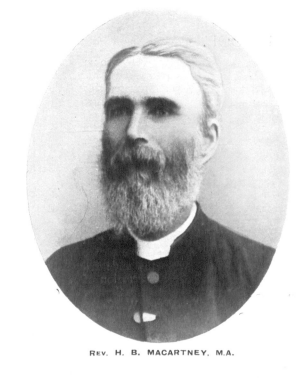
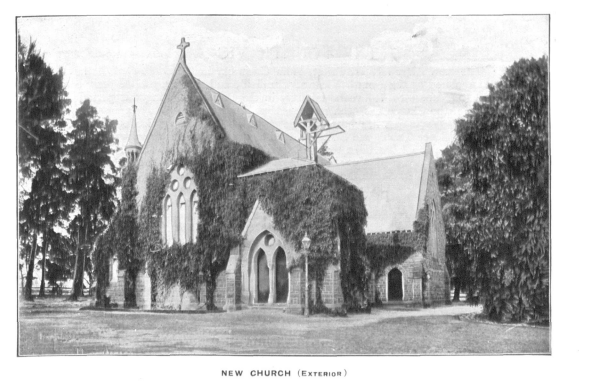
Rev. H. B. Macartney and St Marys Caulfield 1890
Harold lost his elder brother the next month, during the opening of an exhibition of his students paintings at Echuca - the first Family Notice has clearly been placed in the local paper by either Harold or Mabel - the second by his brothers' parents. That left Harold and his brother Francis William Tristram Squire as the only surviving children of the union - the rest were lost to the diseases and epidemics that raged through the population and where, in some suburbs, deaths were recorded on a day to day basis from Typus, Consumption and Typoid:
DEATH
Squire.—On the 21st October, Heighbridge House, Park-street, Parkville, Edward Tristram Prickett Squire, eldest son of Mr T. E. P. Squire, of Victorian Railways, and beloved brother of H. T. Squire, of Echuca. Advertising (1890, October 22). The Riverine Herald (Echuca, Vic. : Moama, NSW : 1869 - 1954; 1998 - 2002), p. 2. Retrieved from http://nla.gov.au/nla.news-article114682035
SQUIRE. —On the 21st inst., at 85 Park-street, Parkville, Edward T. P., the dearly beloved eldest son of T. E. P. Squire, Victorian Railways, aged 26 years and 11 months.
" Not dead ; but passed from sight,
To God in closer bond.
Not dead, but passed from night,
Into the light beyond ;
Not dead ; eternal, bright,
His morn of bliss hath dawned." Family Notices (1890, October 24). The Argus (Melbourne, Vic. : 1848 - 1957), p. 1. Retrieved from http://nla.gov.au/nla.news-article8445409
In the same month Harold and Mabel Squire held the first Exhibition of Students work for the Mechanics Institute, a practice that would continue throughout their tenure:
ECHUCA SCHOOL OF DESIGN AND DRAWING
Considerable interest was displayed yesterday afternoon by a large number of the inhabitants of Echuca, especially by the ladies, in the exhibition of paintings and drawings held in the town hall. It may be stated in passing that about a year ago it was decided by the committee of the Mechanics' Institute to better encourage classes for drawing and painting by the appointment of a highly qualified gentleman, and Mr Squire, accompanied by his wife, came here and undertook the duties. The result was apparent yesterday in the exhibition of the artistic work of the Indies of Echuca. The collection on view included drawings from round, flat, model round drawings, and ornamental, in addition to paintings of flowers from nature, landscapes, and life studies. The display was at once convincing that Echuca his in its midst an array of talent deserving of the highest encouragement, which should always be extended in the cultivation of the fine arts. It cannot be Said that the artistic works on view are perfect, but they give evidences of a refined and cultured taste. Nor, indeed, is it reasonable to expect, after only a year's training, that our ladies should be able to produce a Lydia Thompson " Boll Call," unless they should happen to be gifted with a divine genius in the arts of painting and drawing.' But this much we assert, very few districts in these colonies can boast of possessing a better array of art pupils than Mr. and Mrs. Squire have under their tuition, or a better display of drawings and paintings.
Mr G. G. Simpson, of Melbourne, who came here yesterday to judge the work, said in his report:—" I regret that the painting division was withdrawn from competition, as it would have given me great pleasure to have adjudicated upon it, seeing that there are several sections of the best type represented by good work—work of a better quality than is usual in our art schools of the colony." This is a flattering testimonial from so high an authority, and one we feel sure the art students of Echuca will be proud of. But, good as the work is—we refer to the paintings more especially—there is apparent one fault which the amateur is very prone to, and that is the extremely high toned coloring. To the artistic eye this is unpardonable, but then here we have allowances to make that raust cover a multitude of artistic sins of omission, and commission. Our art school is only a bantling, and therefore it would he unreasonable to expect that the pupils should be rapidly have succeeded in mastering the entire secrets of the art of painting, and know all at once how, when, and where to give a natural tint to their pictures. It is, however, one of the greatest mistakes i painter can make to lay the colour on too thick. It spoils a subject that otherwise would prove both attractive and effective. We do not say this in a fault-finding or carping spirit, but with an earnest desire that the ladies who have supplied Echuca with such testimonies of their talent should profit thereby. Any town would be proud of our collection of paintings, and having succeeded be well, it is the greater reason for an extended effort being made to excel in so beautiful and gifted an art.
At 4-30 yesterday his Worship the Mayor opened the exhibition, and gave the prizes to the successful competitors in the drawing sections. In our next issue we shall publish the prize list and the very pertinent remarks made by several gentlemen in connection with the opening of the exhibition. The Town Hall will be open all to-day and in the evening in order to afford the general public tin opportunity of witnessing the evidences of genius displayed by the ladies of Echuca. ECHUCA SCHOOL OF DESIGN AND DRAWING. (1890, October 18). The Riverine Herald (Echuca, Vic. : Moama, NSW : 1869 - 1954; 1998 - 2002), p. 2. Retrieved from http://nla.gov.au/nla.news-article114681949
There are indications that the Squire family also engaged in farming pursuits to make a living. His brother Francis certainly had a farm further west and Harold and Mabel also pursued a rural life and the generation of income through what can be grown.
STRAYED to my Place, a Flock of Geese. If not claimed in three days will be sold to pay expenses. If owner of two Stag Bulls left in my paddocks, does not claim within seven days, will be sold to pay expenses.—H. T. Squire,'’Oaklea," Tatalia, Advertising (1893, April 13). The Riverine Herald (Echuca, Vic. : Moama, NSW : 1869 - 1954; 1998 - 2002), p. 3. Retrieved from http://nla.gov.au/nla.news-article114971541
This advertisement ran on a weekly basis throughout 1893 in The Riverine Herald. In 1891 a depression and strikes, as well as the forming of the Labor party, marked the economic times of Harold and Mabel's first year of marriage, making it necessary to supplement the income. By 1893, as can be read below, Australia was commencing a years long drought that would see many leave the land and the loss of stock as well as a home. The 1891 'recession' was followed by people losing their positions in June 1893, Harold among them, although he continued conducting classes at the Echuca School of Arts:
H. T. SQUIRE,
TEACHER OF DRAWING & PAINTING
UNDER GOVERNMENT.
PRIVATE Class Rooms, Market Buildings. Terms on Application. Advertising (1893, March 15). The Riverine Herald (Echuca, Vic. : Moama, NSW : 1869 - 1954; 1998 - 2002), p. 3. Retrieved from http://nla.gov.au/nla.news-article114970848
The retrenchment policy in the Education department, so far as it affects singing and drawing masters, was given effect to yesterday by the Executive Council, who passed an order dispensing with the services of the following ladies and gentlemen from the 30th June:
Singing— Class 1 : James C. Rennie, Wm. Perraton, Carolina S. Binns (Miss), Archibald G. Lang, Arthur T. Crook, Jas. Brightwell (jun.), Jas. J. Ryan, Wm. S. Matthews, Thos. J. Lamble, Chas. Blanchard, John 6. Lennox, John Hill, Thos. J. Buchan, Henry John Cutler, George W. Crisp, Joseph Oxlee, David J. Moutague, Andrew Millar, Arthur G. Piaster, Ohns. Tuckey, Robt. Weir. Glass 2: George E. Charlton,. Christian B. Coutts (Miss), Jas. Harvey, Robt. J. Henrno, Jas. E. Holmes, Charlotte D. Jnpp (Miss), Benjamin Hill, Lillio G. Jenkins (Miss), Sarali Lloyd (Miss), John Hackeroth, Mary Ellen Meares (Miss), John M'Lean, Henry Nelson, Frederick A. Polkinghorne, Maria Querie (Miss), Elizabeth Renob (Mrs), Maria Robb (Miss), Frank Hy- Thomas, James Stewart, John C. Vernon. Drawing- Class 1 : G. J. Kirkland, Frederick Taylor, Harry Hayward, Frederick J. C. Martell, John Sommers, Hugh J. Fogan, Frederick Foster, Olios. '1'. Radcliffe, Daniel Bartollo, Alexander Dnepol. Class 2 : Margaret F. E. Baskerville (Miss), Rudolph Conlon, Christian B. Coutts (Miss), James P. F. Hognu, Edith J. Hewetson (Miss), John James Leggatt, John Mackereth, Bertha Elizabeth Morfield (Miss), Wm. Rogers, Harold T. Squire, Laurence H. Smith, Marian Wood (Miss). NEWS OF THE DAY. (1893, June 7). The Age (Melbourne, Vic. : 1854 - 1954), p. 4. Retrieved from http://nla.gov.au/nla.news-article193428330
.jpg?timestamp=1586570951743)
.jpg?timestamp=1586570914556)
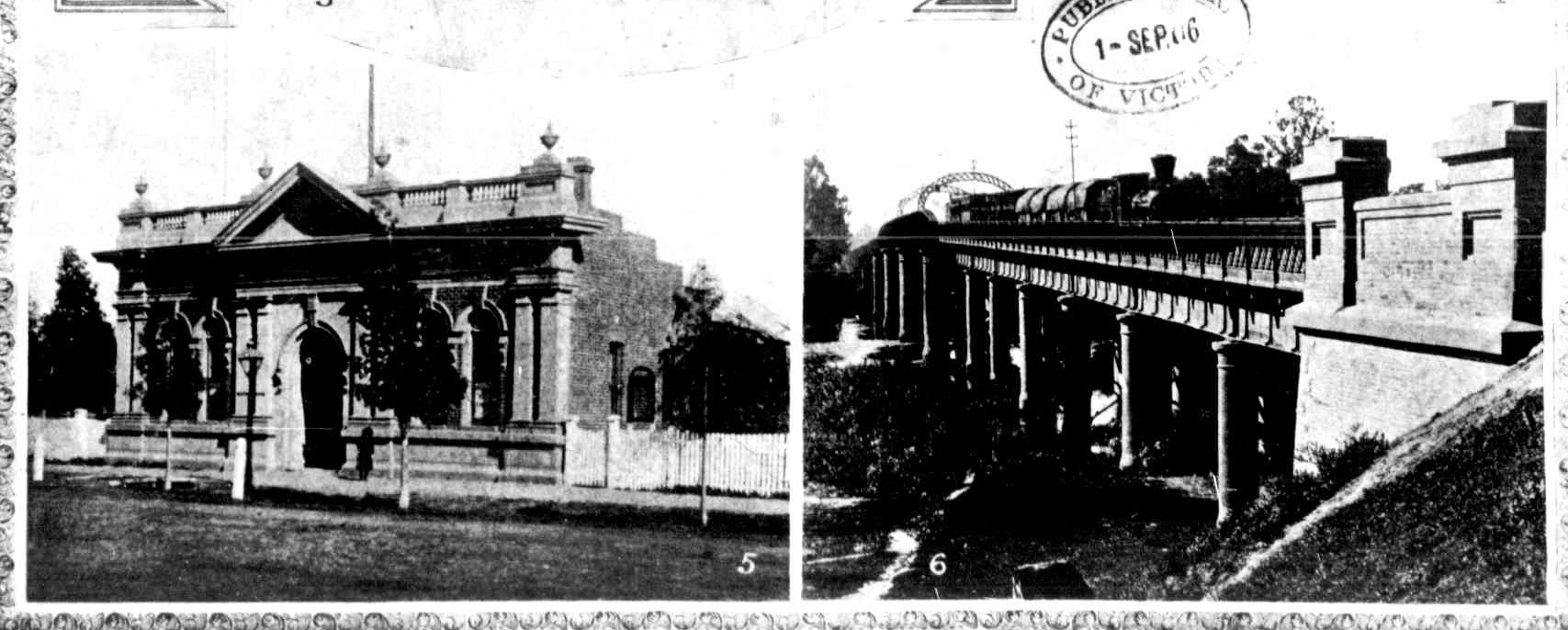
1. RIVER SCENE, MOAMA, WHARF IN THE DISTANCE. 2. POST-OFFICE 3. LOAD OF WOOD, CARTED FROM MESSRS. FALKINER AND SON'S, PEHRICOOTA STATION. 4. THE WATER-TOWER. 5. SCHOOL OF ARTS. 6. MURRAY BRIDGE, IN AND AROUND MOAMA. IN AND AROUND MOAMA. (1906, September 1). The Australasian (Melbourne, Vic. : 1864 - 1946), p. 29. Retrieved from http://nla.gov.au/nla.news-article139175129
Echuca School of Arts.
The opening of the exhibition of students' work in the Town Hall passed off with great eclat yesterday afternoon before a splendid attendance of the representative people of the district; who expressed themselves delighted with the remarkable progress made by the students during the past year, as evidenced by the splendid collection of paintings. Mr Squire is to be congratulated for his determination in endeavouring to persuade his students to take studies from nature and life, and most of the pictures reflect great credit both on the teacher and pupils. All the exhibits show that a thorough course of freehand drawing had been imparted to the students at the school, a fact which is often, unfortunately, not insisted on in art teaching.
About 3.30 p.m. the Mayor (Mr A. W. H. White) formally declared the exhibition open, and, in doing so, expressed great pleasure at the progress made by the pupils under Mr Squire, which/ he stated, was very apparent. He then distributed prizes to the following students Misses E. Irwin, Fairthorne, Lamb, D. Taylor, Maude Scott, A, Lewis, Sabeston, Tulloch, M. Fairthorne, K. Lamb, and Fleming, Mr W. Sanders, and Master Eohoris.
Amongst the best work from life were the following : — Miss Pascoe - St. Bernard dog "Wallace," Spoonbill, Crane and Black Swan ; Pigeons (two paintings) panel, Waratahs. Miss Fairthorne—Dog " Tobby’’ and dog " Wallace." Miss Broadribb—Famous sporting dog, "Cuckoo." Miss Barker—Arum Lillies. Miss Daisy Taylor—Doulton Ure. :
Those from copies worthy of mention were Miss Fairthorne—Italian Fruit Seller and The Lark. Miss Pascoe—Three panels—Swan, Heron and Cactii. Miss M.'Bride —Sea piece, " The Needles" " Loch Lomond." Miss Lamb—Two landscapes—"Evening," " Loch Lomond," and " Clematis." Miss Tainsh—Sunflowers and opal square of chrysanthemums. _ Miss V< Fairthorne—Three sea pieoes and landscape of stags. Miss Ferguson—Landscape, " Farmyard at Moontide," and two panels,. "Moonlight " and landscape. Miss Barker—Study of roses and landscape. Miss Ada Nolan—Two studies, Portia and Parisies. Miss Trebilco—" Autumn," landscape. Miss'Tulloch—Panel of " Azalias," and landscape). Miss Brodribb-Panel, "Autumn." Miss Drummond—Landscape and son piece. Miss Milledge—Panel, "Magnolia Larks," Two sea pieces. Miss K. Bowden—Landscapes, " Loch Lomond " and a snow scene.
There were also other works of merit by various students. Afternoon tea was very tastefully provided by the lady students, the surplus being thoughtfully sent to the various charitable institutions. The exhibition will only remain open until 12 o'clock to-day, instead of all the week, as was intended, on account of Mr Flannagan requiring the hall cleared for his speech night. Echuca School of Arts. (1893, December 14). The Riverine Herald (Echuca, Vic. : Moama, NSW : 1869 - 1954; 1998 - 2002), p. 2. Retrieved from http://nla.gov.au/nla.news-article114977166
By 1896 he had resigned from this position. In early 1895 Letters of Patent were lodged by H T Squire for:
A12568 1385 Application for Letters Patent for an invention by Harold Tristram Squire titled - Improvements in fruit-gathering rods and their attachments 1895 - 1895 7787383
A13150 11952 Specifications for registration of patent by Harold Tristram Squire titled - An improved fruit gatherer 1895 - 1895 9048310
A13151 11952 Application for registration of provisional patent by Harold Tristram Squire titled - An improved fruit gatherer 1895 - 1895
5.576. Harold Tristman Squire Tatatia, near Moama, N.S.W.—Improvements in fruit gathering rods and their attachments. 29th January. Government Gazette Notices (1895, February 12). New South Wales Government Gazette (Sydney, NSW : 1832 - 1900), p. 927. Retrieved from http://nla.gov.au/nla.news-article222221385
5,576. Harold Tristam Squire, Tatatia, near Moama, N.S.W.—Improvements in fruit gathering rods and their attachments. 29th January, 1895. Government Gazette Notices (1895, May 10). New South Wales Government Gazette (Sydney, NSW : 1832 - 1900), p. 3041. Retrieved from http://nla.gov.au/nla.news-article222223504
Even an article was run to introduce the idea to others, which points out the idea did not get a patent, and may even be referring to Francis Squire as the fruit-grower of 20 years standing:
A triple Ladder for Gathering Fruit.
As a fruit-grower of over twenty years' standing, I offer a suggestion (says a correspondent to the "Horticultural Journal") in the matter of ladders.
Plan.— Three ladders, each fastened at the top to a triangle made of three-quarter-Inch rod Iron by single hinges, screwed to the under aides of the ladders.
Material.— A rod of three-quarter-Inch iron, three feet long, to make the triangle. Six pieces of fiat bar iron three-quarters Inch wide, with eye or hinge made on one end. to be screwed to the under side of each ladder at the top by three or four screws. "Wood for the ladder aides, 1in. by 2/4ln. of the required length; rounds of ladder of ash or oak. The width between the sides 9in., to allow of two feet standing on the same round of the ladder at the same time. The hinges should be slipped on to the triangle, two to each side, before it Is Joined. The ladders may be any length, and for trees up to the ages of ten to fifteen years they are much better than double ladders, which must he made wide at the bottom to give steadiness, and where hush fruits are grown under it is difficult to find room for the two legs. A single ladder is altogether out of place in a young fruit plantation. The sides of the triple ladder should be parallel — In fact, might be narrower at the bottom If the ladders are planted for use where there Is an undergrowth, thus making it still easier to find a place for the three ladders.
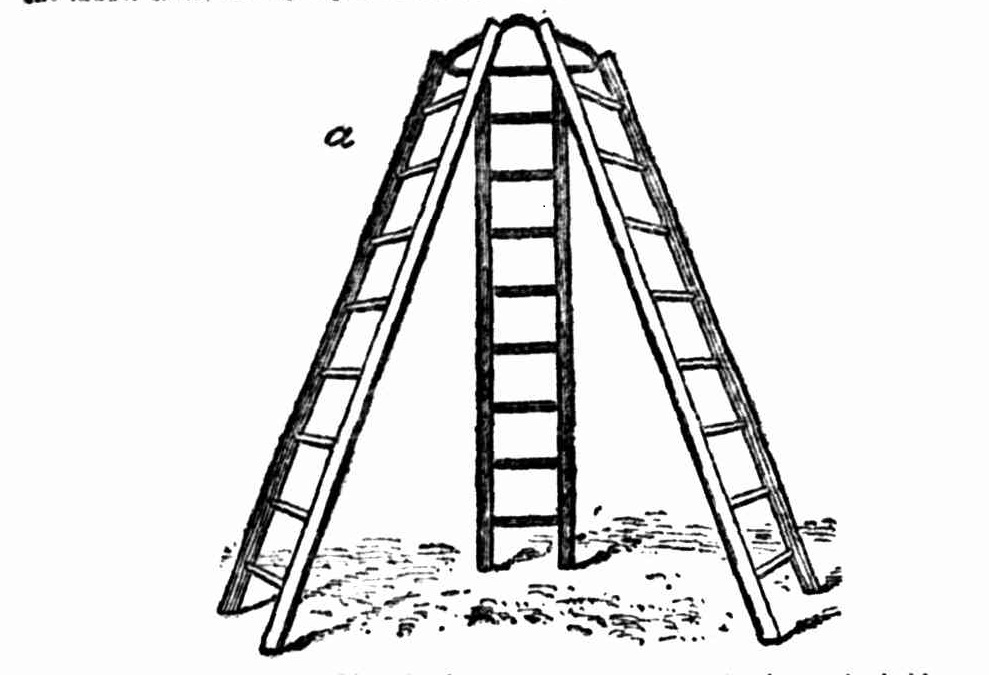
.jpg?timestamp=1583777447986)
I have sets of from eight to sixteen rounds each, and find that 1in. by 2 ½ in. deal is quite strong enough for the sides, and at that length and weight the ladders are quite portable and easy to be moved. It often happens that two women can gather on one set, when they can readily shift them round the tree, or in the shorter lengths a woman can freely work a set alone. I consider that one woman can gather as much fruit by this method as two or more can with single ladders. They are as firm at the top as the ground is, and are not affected by wind.
The ladder is not patented, and can be made by any carpenter or blacksmith. I have had them of all lengths in use for sixteen weeks, and use nothing else on my 40 acres of fruit, except, as the trees grow older, a single ladder for the tops. The illustration will assist readers who are desirous of constructing ladders on this system;— A, shows the ladder as set up for use and B, as laid down one ladder shown, illustrating the method of putting together. Of course, it will be understood that they are drawn together for carrying about. A Triple Ladder for Gathering Fruit. (1896, October 3). Weekly Times (Melbourne, Vic. : 1869 - 1954), p. 32. Retrieved from http://nla.gov.au/nla.news-article221201464
Unfortunately, this 'new enterprise' came on the verge of the Federation Drought, from 1895 to 1903, one of the worst in Australia’s history to the then years, if measured by the enormous stock losses it caused. Named for standing astride the hopeful Federation of Australia years, this drought ended squatter-dominated pastoralism in New South Wales and Queensland as bank foreclosures and the resumption of leases led to the partition of large stations for more intensive settlement and agricultural use.
While further west Harold was clearly still working as an Artist:
There is at present on exhibition at the Bernard Gallery, ColIins-street, an excellent specimen of classic art, entitled "Dawn,"' from the brush of Mr. H. T. Squire, who holds a prominent place amongst local portrait painters. The coming of day is represented by a female figure of great beauty, dispelling the clouds of night. There is a most skillfully obtained air of buoyancy about the whole picture and altogether the artist has been very happy in the handling of the composition and colour harmony. The correct and grateful modelling of the limbs, the filmy drapery and early—morning, fleecy clouds combine to make a most charming effect. Mr. Squire is to be congratulated upon his clever piece of work, which should ensure his future effort an appreciative welcome. CLIVEDEN “AT HOME.” (1903, May 7).Punch (Melbourne, Vic. : 1900 - 1918; 1925), p. 23. Retrieved from http://nla.gov.au/nla.news-article175399826
PAINTING.-Mr. H. T. Squires, Artist, who is well known in Benalla and district, has a very fine picture on view in the Bernard Gallery, regarding which Melbourne 'Punch' says:— 'There is at present on exhibition at the Bernard Gallery, Collins-street, an excellent specimen of classic art, entitled ' Dawn,' from the brush of Mr. H, T. Squires, who holds a prominent place Amongst local portrait painters. The coming of day is represented by a female figure of great beauty, dispelling the clouds of night. There is a most skilfully observed air of buoyancy about the whole picture, And Altogether the artist has been very happy in the handling of the composition and color harmony. The correct and graceful modelling of the limbs, the filmy drapery, and early morning fleecy clouds, combine to make a most charming effect. Mr. Squires is to be congratulated upon his clever piece of work, which should ensure his future efforts an appreciative welcome.' THE FEDERAL CAPITAL. (1903, July 28).Benalla Standard (Vic. : 1901 - 1925), p. 2. Retrieved from http://nla.gov.au/nla.news-article155248372
The H Tristram and Mabel Squire trail disappears for a few months after July 1903, during which, via later reports, it seems Mr. Squire was on a boat on the Murray river, painting. By the Spring of 1905 it is apparent they have been in Hobart Tasmania for a while and here it is Mabel who appears most among published advertisements and records for undertaking a few ventures. The first is:
LE C T U R E TO WIVES, MOTHERS, DAUGHTERS, On "HEALTH AND VIAVI," the Common-sense Home Treatment, at VICTORIA-HALL, VICTORIA-ST., On THURSDAY, SEPT. 7, at 8 p.m. Admission-Free. Lecturer: MRS. SQUIRE. Advertising (1905, September 2). The Mercury (Hobart, Tas. : 1860 - 1954), p. 5. Retrieved from http://nla.gov.au/nla.news-article12316962
LECTURE To-Night to Ladies on HEALTH and VIAVI, the Natural Home Treatment, at Victoria-hall, at 8 o'clock. Lecturer: MRS. SQUIRE. Admission-Free. Advertising (1905, October 12). The Mercury (Hobart, Tas. : 1860 - 1954), p. 5. Retrieved from http://nla.gov.au/nla.news-article12321966
LECTURE TO-NIGHT TO LADIES on VIAVI (the Natural Treatment) and 'HEALTH at the VICTORIA-HALL, at 8 o'clock. Lecturer, Mrs. SQUIRE. Free. Advertising (1905, December 7). The Mercury (Hobart, Tas. : 1860 - 1954), p. 5. Retrieved from http://nla.gov.au/nla.news-article12328850
Online versions of this product and its work: 'Viavi hygiene, explaining the natural principles upon which ... [Law, Hartland] [from old catalog]' https://babel.hathitrust.org/cgi/pt?id=loc.ark:/13960/t12n67z3d&view=1up&seq=9
LECTURE-How to secure good health by rational natural means. Viavi Health School, Bank of Australasia Chambers. Thursday Evening, 8 o'clock. Mrs. M. E. Squire, Manager. Advertising (1906, November 15). The Mercury (Hobart, Tas. : 1860 - 1954), p. 5. Retrieved from http://nla.gov.au/nla.news-article12826455
In November 1907 Mrs. Squire is listed as an agent or place to purchase The Mercury newspaper from as a Town agent, giving an Elizabeth Street, Hobart address - as well as advertisements for the Viavi system. What is most poignant about these advertisements is, if you read the work/book linked to above, the focus on women having difficulties falling pregnant, or miscarrying - and the 'blame' being placed on them in the tone of that literature. An exhaustive search of all the Birth registrations for all the Australian states did not find any children being born to H T and Mabel Eunice Squire, although it is clear, reading of their work among young people and encouraging them as Artists, that children would have been very welcome.
HEALTH LECTURE. Viavi Rooms, Bank Australasia Chambers, Wed., June 12, at 3 p.m. Mrs, M. E. Squire. Advertising (1907, June 12). The Mercury (Hobart, Tas. : 1860 - 1954), p. 5. Retrieved from http://nla.gov.au/nla.news-article9924967
By mid 1908 Mabel is about to open a new business with the local Hobart papers also lending an insight into what her husband was up to - this also shows the shift to using the name H Tristram Squire instead of Harold Squire or H T Squire:
The Critic has never said a word in dispraise of ladies -intellectual, but has always sighed for the apotheosis of the cook—or rather, of the housewife. Happily there are abundant indications that the domesticated woman is coming out of that obscurity into which, for a time, the young person of the competitive examination drove her.
On Wednesday morning, the writer had chat with Mrs. Tristram Squire, Principal of the Alexandra College of Domestic Economy, which is to be born next week in the basement of the National Mutuals’ Macquarie street building. But on Wednesday Mrs. Squire was in her office, which is on the ground floor of Mr Pottenger’s pile.
And a very pretty lounge that office is, though, to the uncultured, the pictures which adorn its walls suggest anything rather than lectures on the culinary art, dressmaking, and domestic economy.
The pictures, by the way, are for the most part the work of Mr Squire, an artist with whose handwork a number of Hobart folk are familiar. His work is dainty and highly finished. He delights in moonlight effects, and once upon a time fitted up a boat in which he navigated the Murray, painting its beauty spots by moonlight. The boat was fitted with a light so shaded that its rays fell on the canvas, but not on the waters or the banks of the river.
But now Mr Squire is away on the N.W. Coast, at Sprent, doing clerical work in a scattered parish. He teaches art, and his classes are very big, naturally so, for he accepts no fees. Perhaps Mr Squire is a follower of Wagner, of the “Simple Life’’.
At any rate, he is said to be beguiling the monotony of the lay reader’s life by doing the field work of an ailing parishioner, with sick wife and children. The parson relieves the layman of his work in the potato field, that the parishioner may be at the bedside of his sick ones.
This, however, is a digression. The Alexandra College has a staff which includes two or three ladies recently from England, with Hobartians well known as Misses Searle, Susman, and Kennedy.
And for the incidental lectures, Mrs. Squires has secured the services of quite a formidable phalanx of lecturers. The Premier has placed the eloquence and the learning of the experts at the services of the College. Experts and knowledge of domestic economy the leader of the Opposition has none, but such as he has, he is giving, and the “ such ” takes the form of a talk on politics.
But of the lecturers, the chief will be the Bishop of Tasmania, who is to favor the students with a short course to open with—a talk on cookery. It isn’t every day that the World and His Wife hear a Right Rev. Prelate discoursing on the culinary art.
Yet, it’s a fine theme. There is the historic side. First, the savage days when men learnt to cook, let us hope in less costly fashion than Charles Lamb fables in his immortal Essay on Roast Port.
Then the classic days, with the almost incredible extravagance of the nights when Lucullus supped with Lucullus, on through the times of Brillat-Savann and the gourmets to our own days, when, one is told, quite young men and women, the sons and daughters of successful money rubbers, are as devoted to the pleasures of the table as were the dotards of more virile periods.
There is the poetical side, suggested by the vegetarian cult, and in its turn suggesting Shelly’s verse And that, of course, leads to the physiological and psycholical aspects of the question. The effects of a man’s eatings and drinkings on his physical, mental, and spiritual development, and these will take one into the most matter-of-fact medical prosing, or into the finest spun theories of the Theosophists. And on all these matters, be it noted, the Bishop may talk ever so wisely, even though gruel prepared by torn for a dying layman might be “ pasty as that made by Hood’s poor little governess on the Rhine.
Mark you, the Critic does not assert that Dr. Mercer’s gruel would be paste, or his cake dough. Dr. Mercer talks, writes, plays, paints, goes to the ant and considers its ways. In brief, lie is a singularly all-round man, and, likely enough, he can concoct a masterly salad, do an omelette to a turn, or brew ——. But no, shades of Crouch and Lodge rise and protest.
Well, the Bishop is to talk about cookery, Dr. Elkington about hygiene, and other men about other things. And, better still, at the opening of the College, the public are to be treated to coffee, scones, and the like, made “ before their very eyes ” by the lady graduates.
Business people apparently think well of the college, for the Gas Company is supplying a gas stove, the tramway people an electric cooking apparatus, and one of the big firms-C. Davis and Sons—the writer fancies, an oil stove. So students can practice the art in a variety of ways, and if any of them are disposed to sneer at the oil stove, let them remember that some day they may have to produce a banquet in the bush.
Nor are novelties likely to be lacking, for the American Consul is interesting himself, and has sent away to Yankee land for the latest notions in economy. That Premier, Bishops, and Consuls are disposed to take the matter up warmly is good, for their so doing tends to restore the domestic woman, be she mistress or maid, to her true place in public esteem. CASUAL CHAT. (1908, July 4). Critic (Hobart, Tas. : 1907 - 1924), p. 7. Retrieved from http://nla.gov.au/nla.news-article162965755
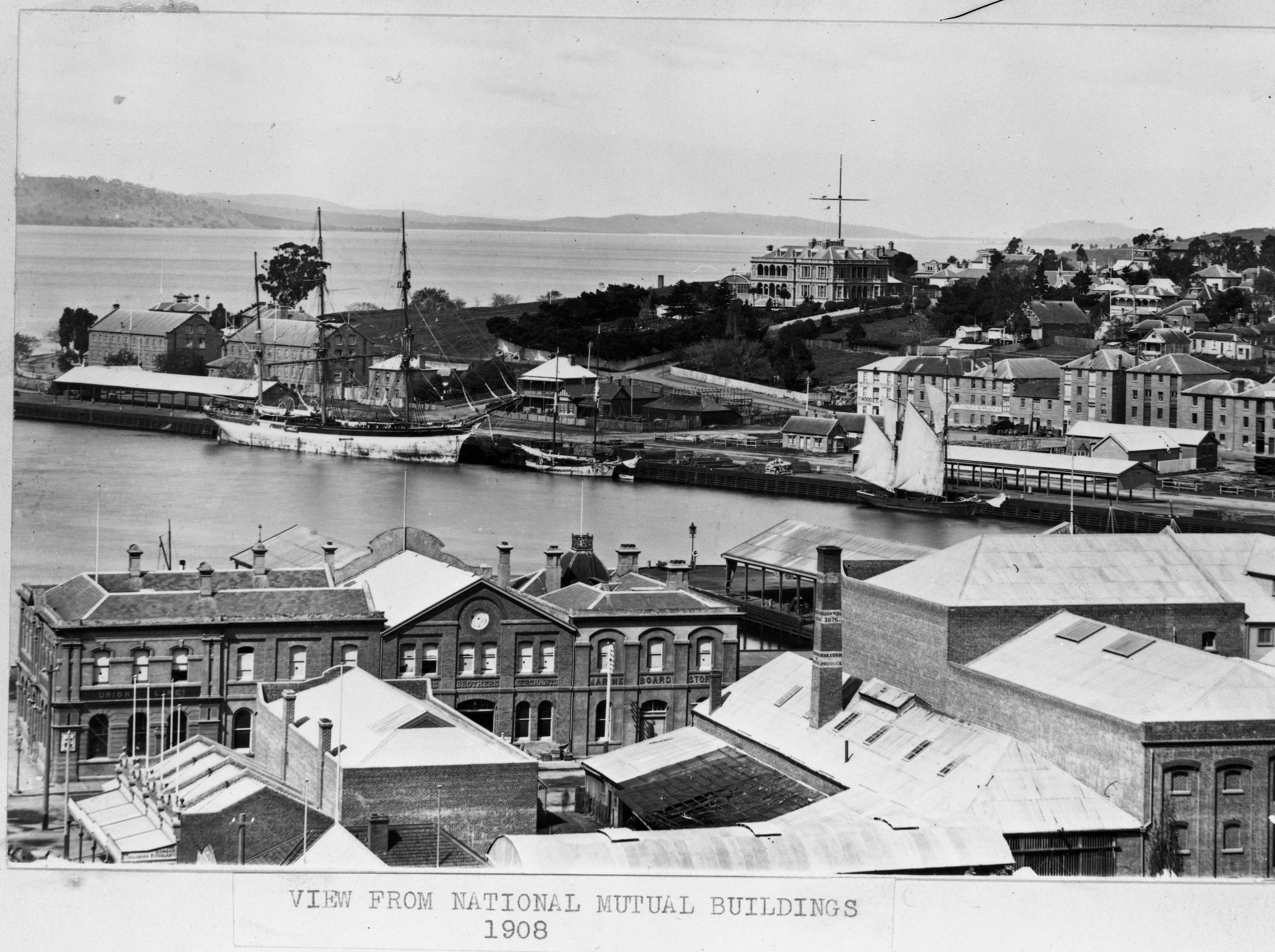
View from the National Mutual Buildings, Hobart. 1908 Item: AB713-1-11688, courtesy State Library of Tasmania.
COLLEGE OF DOMESTIC ECONOMY.
OPENED IN HOBART TO-DAY. A SPLENDID INSTITUTION.
.jpg?timestamp=1586581545766) During the last few years many new fields of industry have been thrown open to women, and tin's fact Las not .only been availed of, but it has stimulated them to devoting more time to perfecting the walks of life which are peculiarly their own. Every day shows a more or less tendency to democracy, with the result that now-a-days it 'is by no means looked upon as lowering one of what is termed "gentle" brood,
During the last few years many new fields of industry have been thrown open to women, and tin's fact Las not .only been availed of, but it has stimulated them to devoting more time to perfecting the walks of life which are peculiarly their own. Every day shows a more or less tendency to democracy, with the result that now-a-days it 'is by no means looked upon as lowering one of what is termed "gentle" brood,
….The college will be in charge of Mrs. H. Tristram Squire, a well-known exponent of domestic economy, who will be assisted by a teaching staff of 14 well qualified teachers. Intending pupils are now being enrolled, and the first term begins on the 14th instant. The scale of fees are most moderate, and the committee of management deserve much praise for making them such. In addition to the classes for continuous study, a number of instructive and interesting lectures will be given by prominent ladies and gentlemen of Hobart on subjects of special interest to women. These will be announced later. Mrs. Squire has a well-appointed office on the main floor, where she can daily be soon by anyone wishing to do so, and she will give all information required in connection with the college. COLLEGE OF DOMESTIC ECONOMY. (1908, July 8). Tasmanian News (Hobart, Tas. : 1883 - 1911), p. 1 (FOURTH EDITION). Retrieved from http://nla.gov.au/nla.news-article180376750
DOMESTIC ECONOMY COLLEGE OPENED BY THE PREMIER.
Yesterday afternoon the Premier opened, in the National Mutual Buildings, the Alexandra College of Domestic Economy and-Hygiene. The college has been started with the objects of promoting the comforts of the homo, and showing how the best results can be obtained from available income, to make labour more attractive by better provision for the health and well-being of the household, to improve the status of domestic workers, and attract a capable class of girls, thoroughly taught and fitted for all duties, and to give ladies an opportunity of increasing their incomes without leaving their homes. There was a large attendance of ladies at the opening, including Lady Lewis and Mesdames B. S. Bird, W. B. Piopsting, and H. Nicholls.
The Premier, who was accompanied by Mrs. Evans, in declaring the college open, said he had much pleasure in taking part in the ceremony, and complimented the principal (Mrs. H. Tristan Squire), the committee, and the teaching staff, on placing an elaborate syllabus before the people of Hobart. Work of a similar description had been taken up before in the city, and at the beginning there was manifested a desire on the part of the ladies to obtain information; but within a short time the classes, owing to a want of support, had to be abandoned. He had taken part in similar inaugurations to the one that day, but he had to state that at no time had there been apparent such an interest, or so complete a prospectus submitted. If one half of the items on the prospectus could be called into effect, then he -was certain success would attend the efforts of the principal and the committee. The syllabus referred to the health and well-being of the household, and that was a very important factor in home life, for they must not overlook the fact that, in gaining information re-gal ding home life, they were helping in every possible way the national interests of the State. To thoroughly teach girls in all duties was another course from which great benefit, would be derived, and as for the class which would teach ladies how to manage their incomes without leaving their homes, that should become most popular. He had much pleasure in taking part in the opening ceremony, and wished the college every success. (Applause.)
Mr. A. J. Taylor also congratulated the organisers of the movement on the success of the opening.
In the basement of the building several firms displayed their goods. Messrs. Burgess Bros, show oil stoves for economical cooking and heating, and the Gas Company have an exhibit of cooking stoves and electric radiators, the latter developing heat for many purposes. The Carlton Cafe showed a tempting assortment of goods, and Messrs. W. D. Peacock and Co. jams, jollies, and sauces. Messrs. Dehlo, Bennison, and Co. exhibited a fine collection of "Pineapple" brand edibles, and ladies were much interested in their economical "O.K." washer. Day's furniture arcade and Singer's Sewing Machine Co. had a fine array, and some dainty millinery was shown by the Misses Bennett, and toilet requisites by the Misses McKay.
During the afternoon tea and coffee were supplied by Mr. H. Moore, of Liverpool-street, and musical items were rendered by Mrs. Edgar Phillips and her pupil (Miss Claire Chancellor) Miss Fletcher, and Master Paul Abbott. In addition to the classes for continuous study, a number of lectures will be given, the Premier intimating that, with the consent of the Council of Agriculture, he had agreed to allow the Government exports to discourse on their special subjects. DOMESTIC ECONOMY. (1908, July 9). The Mercury (Hobart, Tas. : 1860 - 1954), p. 7. Retrieved from http://nla.gov.au/nla.news-article12681203
On Wednesday afternoon the Premier opened the College of Domestic Economy, of which Mrs Tristram Squire is principal.
As we pointed out last week, there is a fine opening for first rate lessons in cooking, hygiene, and kindred topics. Mrs Squire’s venture starts under the most favorable conditions. It is blessed by Premier and Leader of the Opposition, and it is darkly hinted that a prominent Laborite was discovered discussing the coffee and scones. The Critic hopes the College will have a very prosperous career. CASUAL CHAT. (1908, July 11 - Saturday). Critic (Hobart, Tas. : 1907 - 1924), p. 7. Retrieved from http://nla.gov.au/nla.news-article162965821
Advertisements continue to appear through 1908 and until late 1909 and then cease. There are some indications the couple spent longer in Tasmania but the trail disappears for a few years until they turn up in Victoria again.
Mabel's parents passed away, in 1912 and 1916 respectively.
In 1920 Harold Tristram's mother passes away and the couple are clearly living with or near his brother Francis, again near the water at Hawthorn:
SQUIRE.—On the 11th February, at 22 Mathoura road, Toorak, Alice Mary, loved mother of Harold and Francis Squire, 7 Coppin's grove, Hawthorn, aged 88 years. At rest. Family Notices (1920, February 13). The Argus (Melbourne, Vic. : 1848 - 1957), p. 1. Retrieved from http://nla.gov.au/nla.news-article1677127
By March 1922 they are living in Sydney where his tools, for sculpture it would seem given the output of works from the 1920's on, were stolen:
Sydney.—Stolen, between 9.30 p.m. the 11th and 5 a.m. the 12th instant, from the residence of Harold Tristram Squires, 42 Margaret-street, Sydney.—A new black dress suit, and a white dinner suit, both have “David Jones” on tab; a white duck suit; a black cloth overcoat; two white dress shirts; two fancy coloured neckties; twelve white handkerchiefs; twenty-four white linen collars, “H. T. Squires” in ink on them; six white soft shirts; and six white shirts with black stripes; six pairs black socks; a large steel cabin trunk, 42 by 18 inches; pair of heavy tan boots; and two pairs of white canvas shoes with leather soles, size 8; two white linen bed-sheets; two large black marble ornamental - tigers, with wooden tails; an oval steel hat-box, “H. T. Squires” on it; a white pith helmet; two lady’s hats, one black straw, the other white and green straw; a number of Government certificates for art work in the name of Harold Tristram Squires; and a green-painted tin trunk, containing a quantity of tools; total value, £35. Portion identifiable…Burglaries, etc. (1922, March 15). New South Wales Police Gazette and Weekly Record of Crime (Sydney : 1860 - 1930), p. 151. Retrieved from http://nla.gov.au/nla.news-article252092018
Soon after this they are living in Dungarvon at Mona Vale. This wonderful home on Park Street, Mona Vale 'Dungarvon’ was built in circa 1904, making it one of the oldest properties in Pittwater. Built by Samuel Stringer, a carpenter by trade, he worked on most of the timber work himself and his son Stan Stringer recalls being told that the stone walls were built by French stonemasons who had been employed to build Brock's 'The Oaks' on the Mona Vale beachfront, where Mr. Stringer also found employment. Local stonemason James Booth apparently had some input too.
These photos were taken by A J Guesdon in 2009 of Dungarvon in Park Street, Mona Vale:
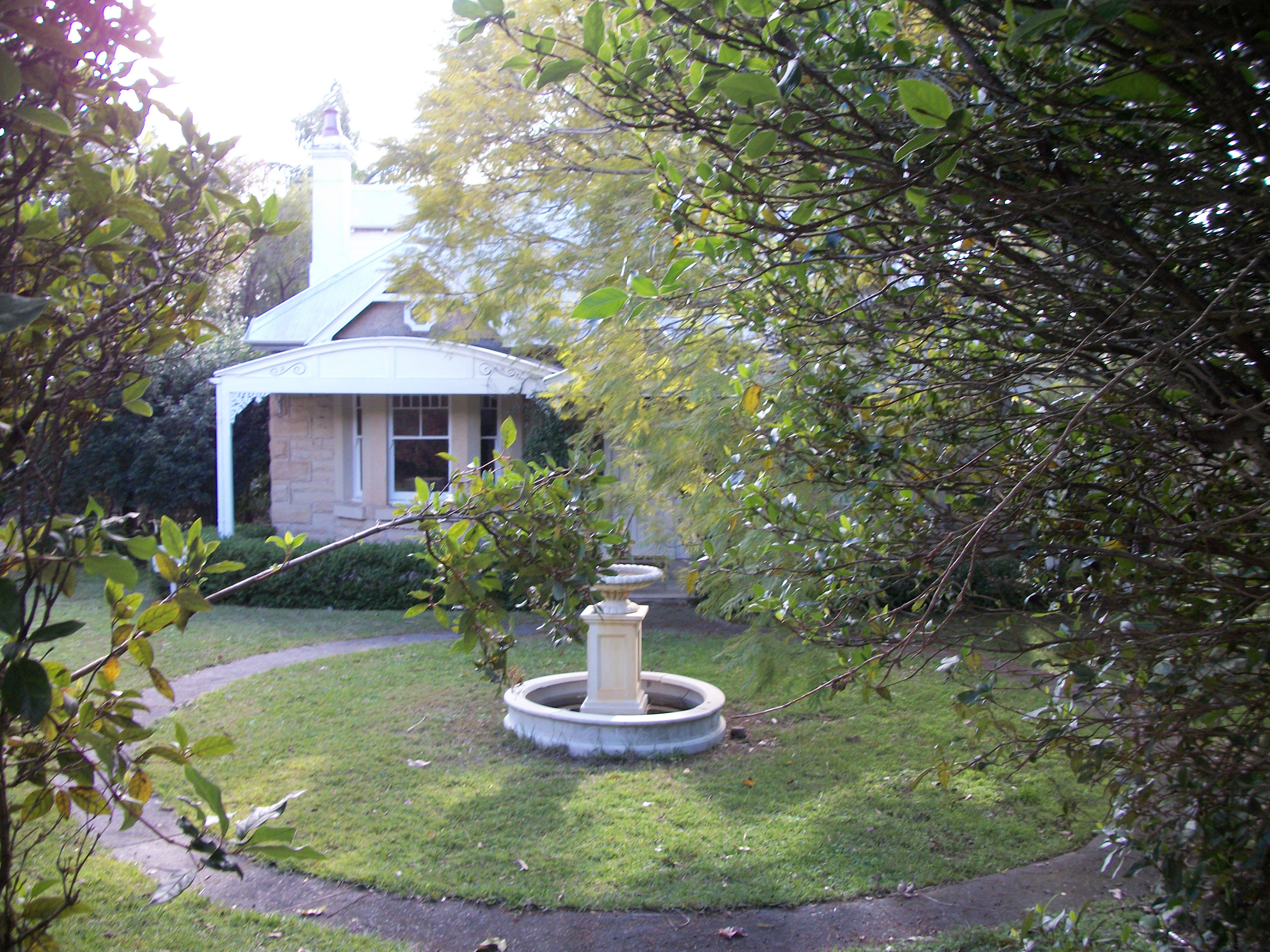
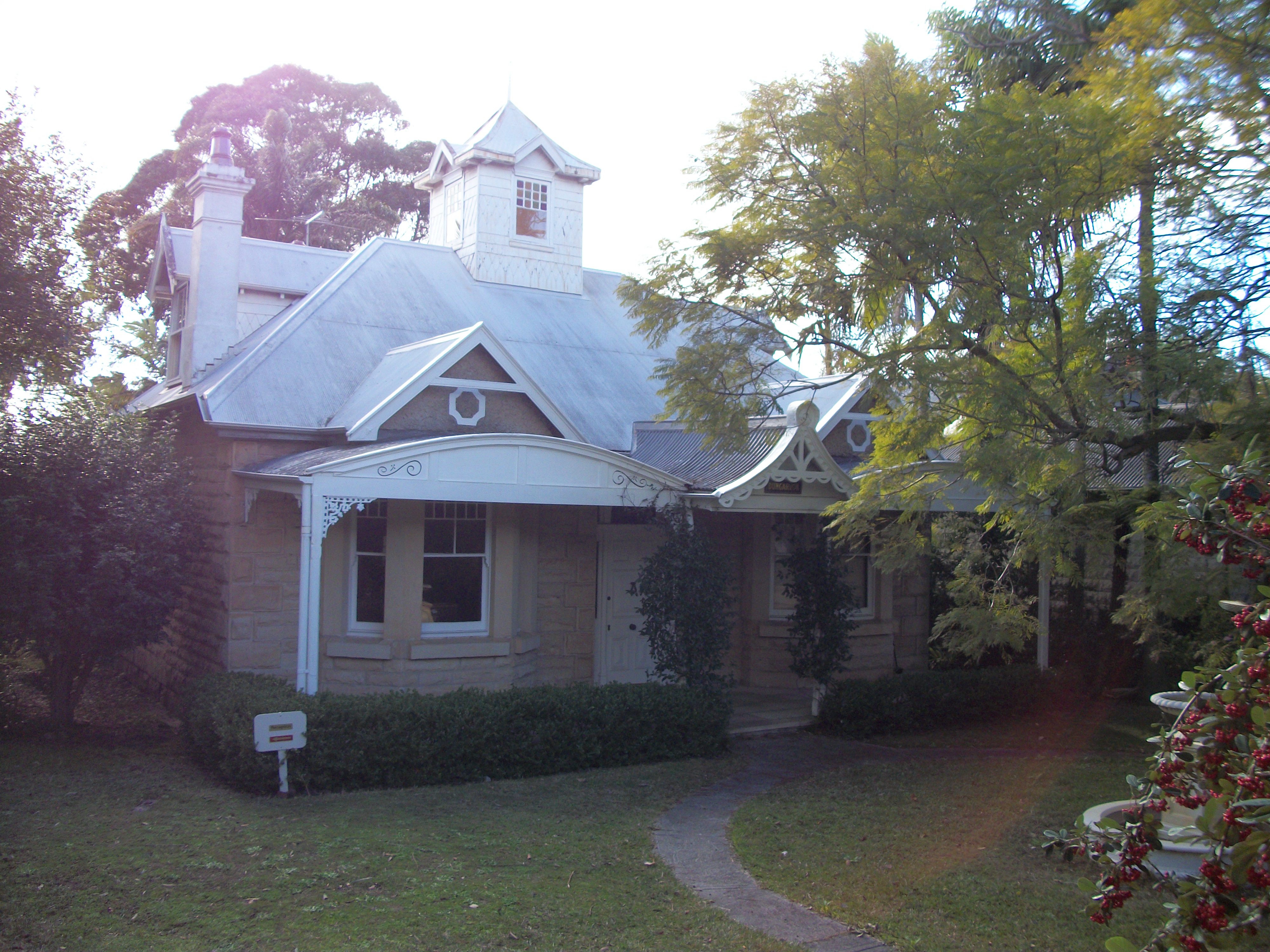
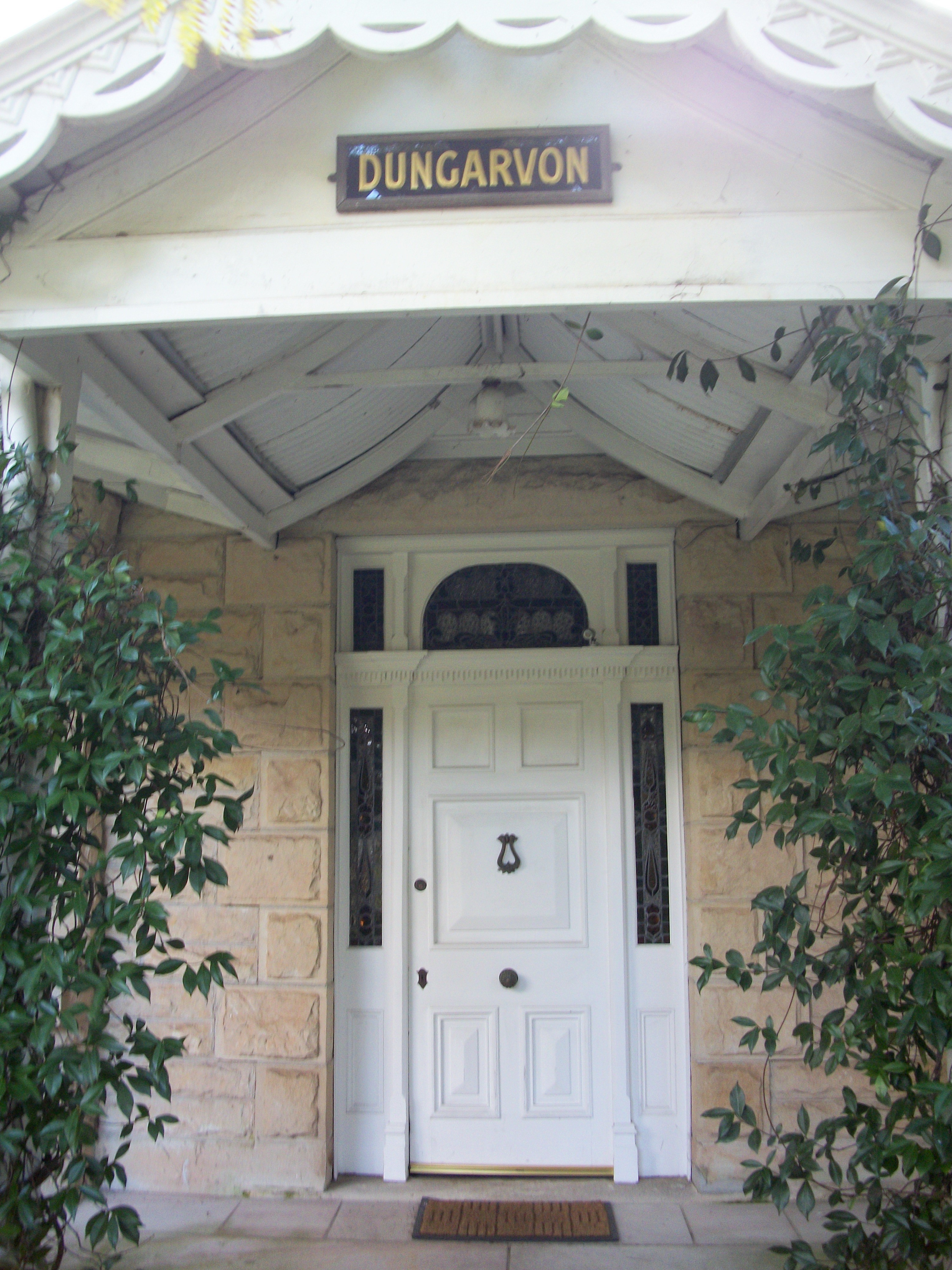
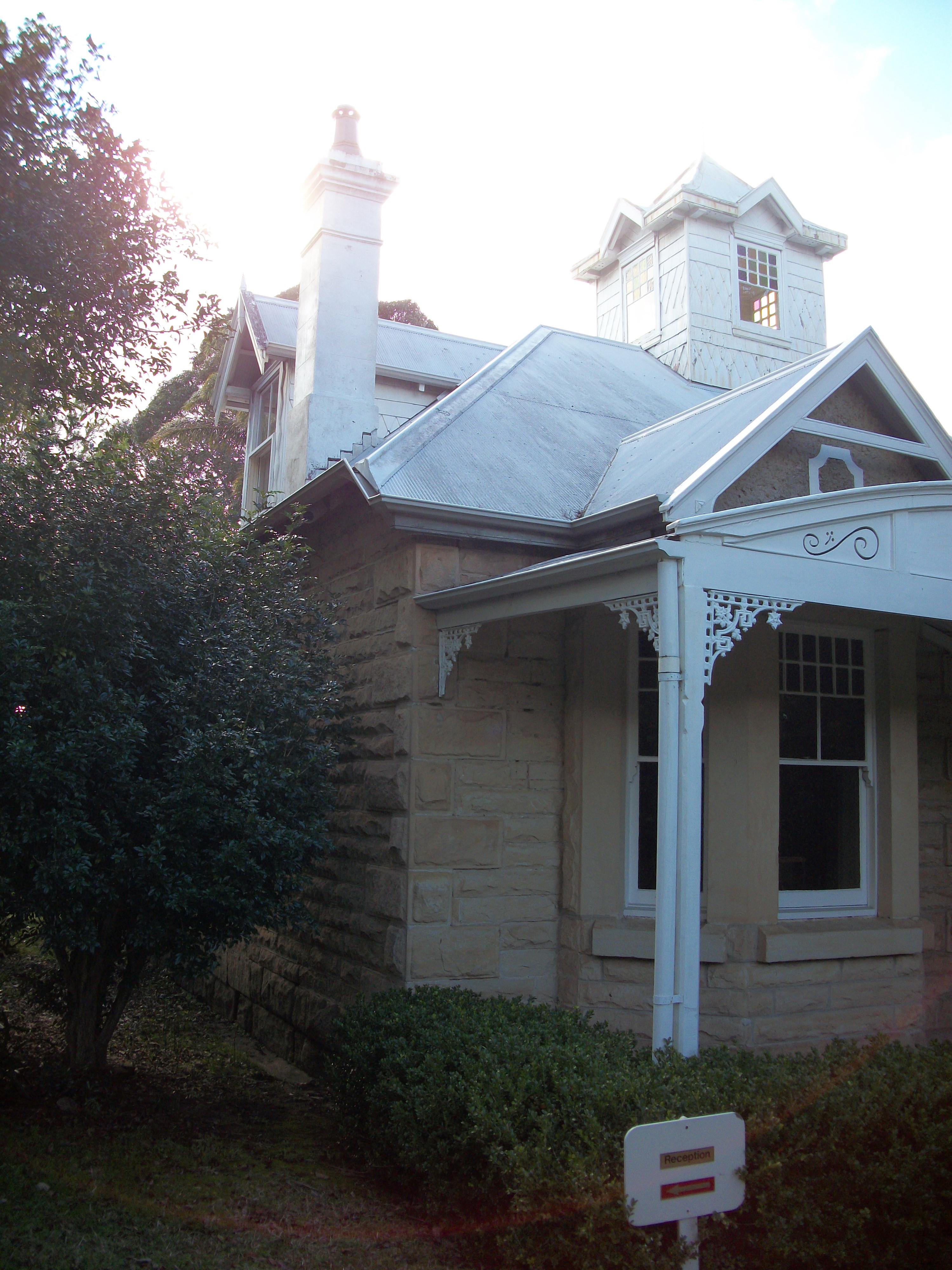
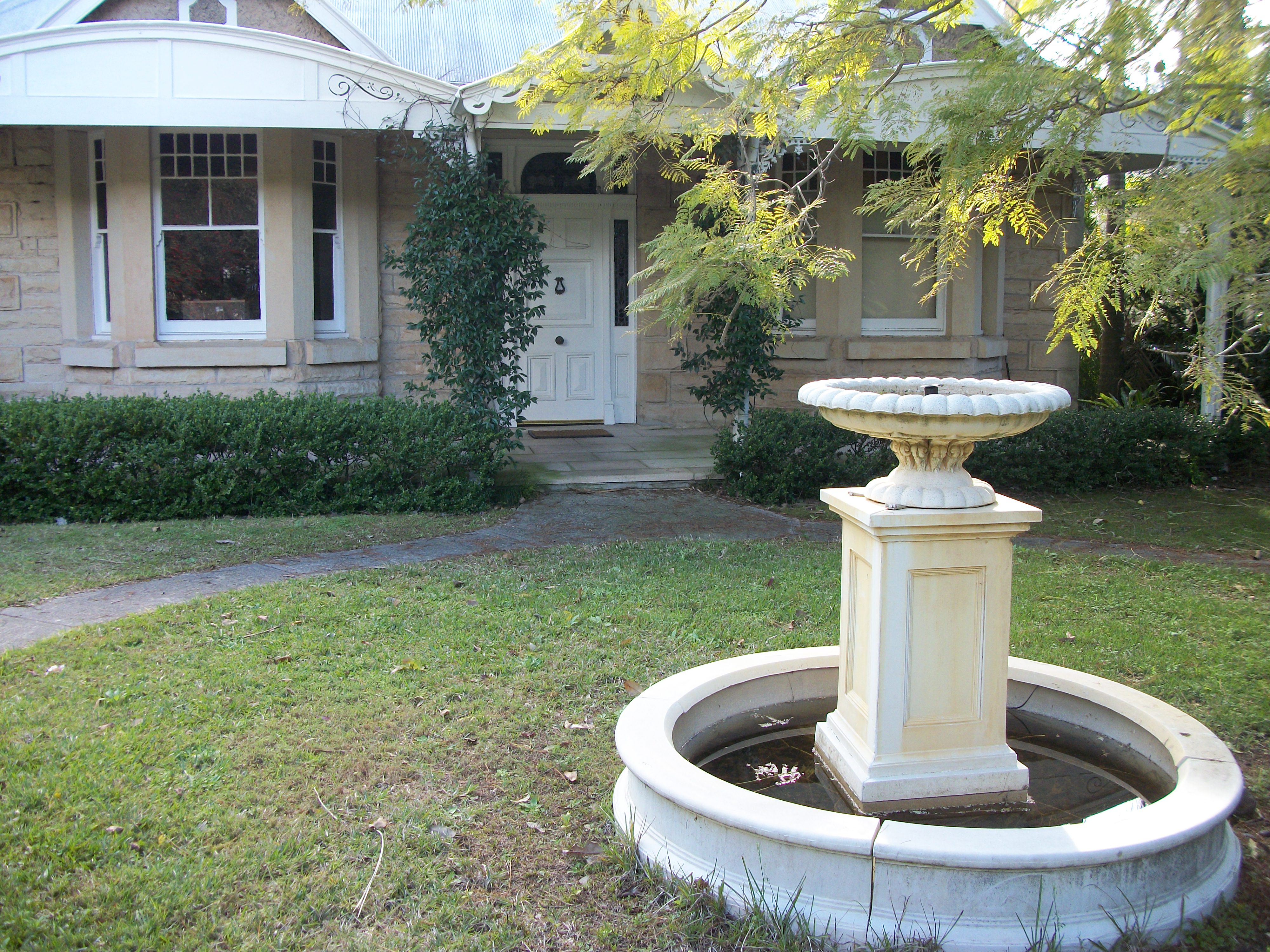
Mr. Stringer bought six adjoining blocks of land in Park Street, Mona Vale for £125, which formed section 1 of the Mona Vale Estate. He borrowed £200 to finance the construction of Dungarvon and also 26 Park Street, next door, which was Mona Vale Public School for a few years before the new school was built.
The papers of the past also record him acquiring more land here:
Samuel Stringer, of Mona Vale, builder. 9th of October 1906, allotment 3, section 2, Turimetta, offered for sale January 28, 1897, 1 rood 30 perches, £14. APPROVAL OF AFTER-AUCTION PURCHASES. (1906, October 31). Government Gazette of the State of New South Wales (Sydney, NSW : 1901 - 2001), p. 5897. Retrieved from http://nla.gov.au/nla.news-article226529800
The Stringer family of eleven lived in the home until 1922.
Dungarvon was purchased by Harold and Mabel Squire, and her sisters Helene and Beatrice Harvey, all Artists, in February 1923 with the contract for sale lodged in January 1924 showing they paid £1850.00 for the building and land associated with it. The Stringer property was purchased by Narelle Lethbridge Jackson, wife of a local real estate agent, in September 1922.
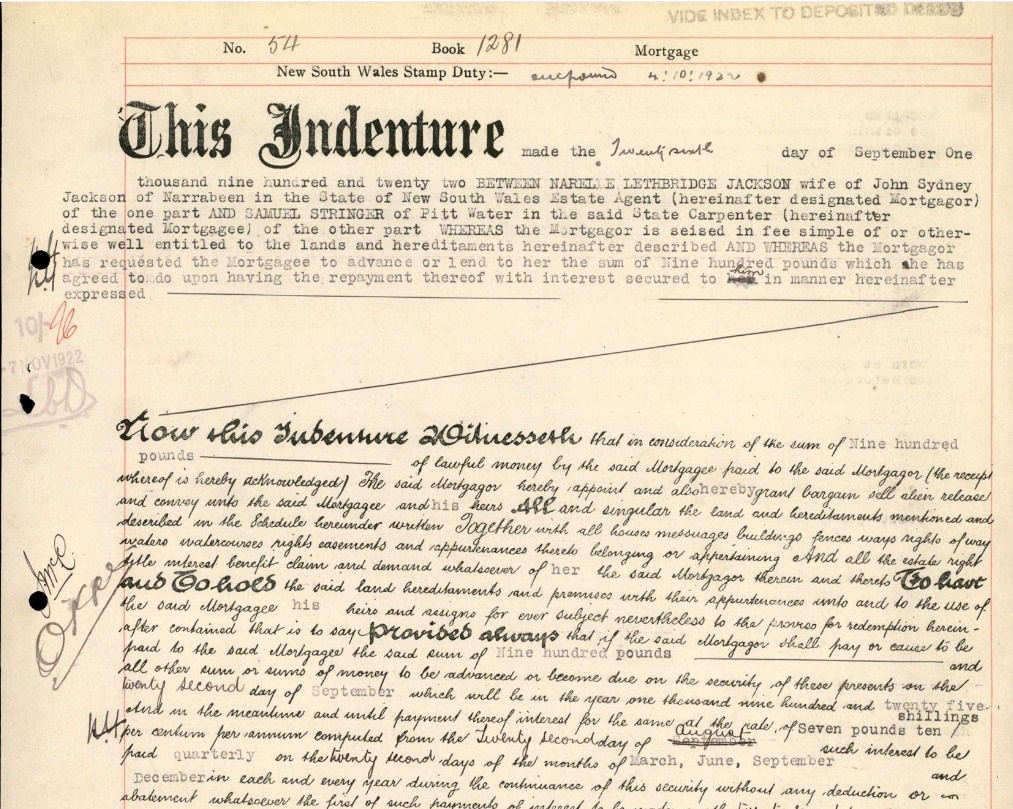

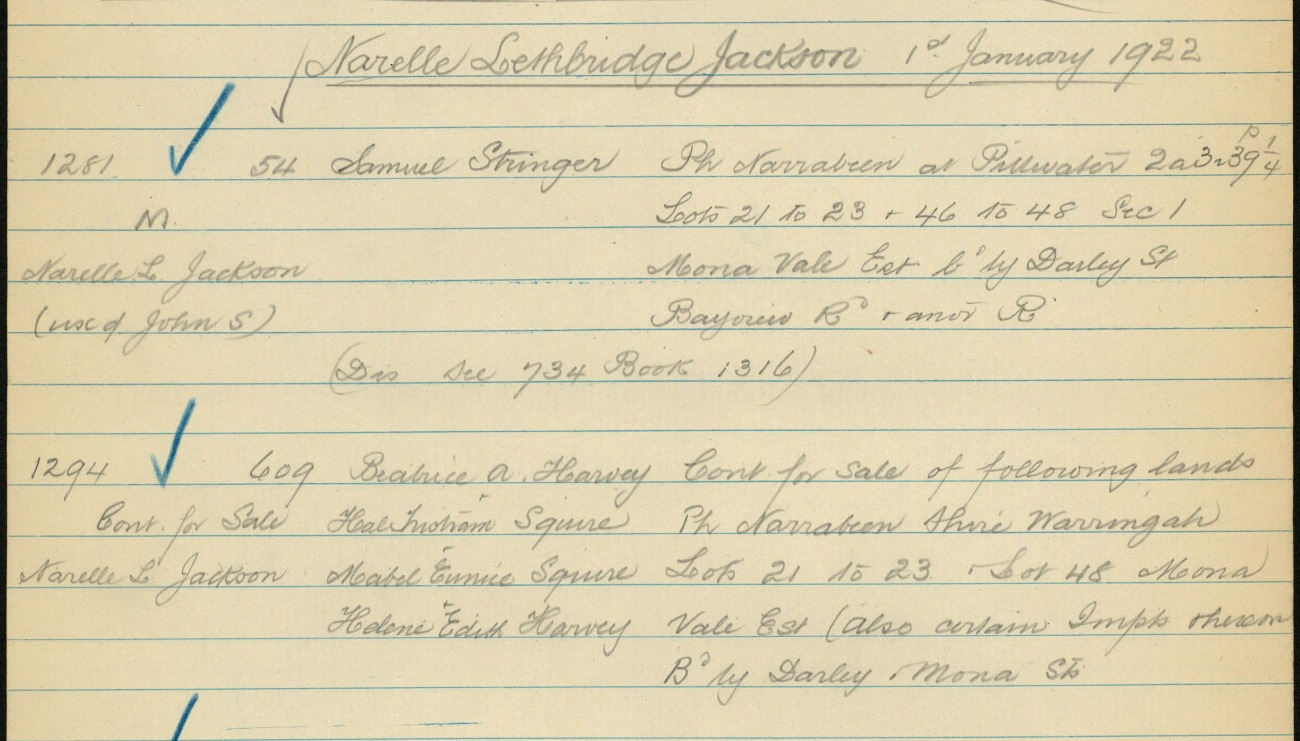
Book 1294-609 provides the contract and describes a stone villa as well as the land bought by the Squire couple and Harvey sisters, with Mabel Eunice Squire the signatory:
.jpg?timestamp=1712187705710)
.jpg?timestamp=1712181513930)
.jpg?timestamp=1712181473534)
The Squire and Harvey sisters, all still working Artists, were certainly part of a ball at Mona Vale in 1924. A newspaper report for this event provides some insights:
Mr. and Mrs. Squires, of Mona Vale, have had many local successes with an elephant which they constructed. This clever animal would be very useful for collecting toys and dolls for Christmas treats. Mr. and Mrs. Squires are ready to lend the elephant and their services if one of the business firms would have the elephant conveyed to Sydney from Mona Vale.
The annual ball of the Mona Vale Cricket Club, which was held at the Pittwater Hall, proved very successful. Many fancy dresses were worn, prizes being awarded to Mr. J. Skinner, Miss Topsy Kuhlmorgen, Mr. E. King, and Miss Audrey Snape.
A special prize was given to Mr. and Mrs. Squires for the clever elephant. They were assisted by Miss B. Harvey and Miss H. Harvey, who acted as keepers. Others wearing fancy costumes were Mesdames Austin and McLaren, the Misses B. Fairley, Thelma Austin, Poppy Notting, Dorothy Greig, Ivy Oliver, Dowling, Ethel Dunbar, Ivy Hardy, Nell Jackson, and Messrs. Hector Craig, Clyde Hicks, Austin, and Cedric Williams. Those who assisted materially to make the evening so big a success were Messrs. J. Austin, sen., G. Shepherd, and G. Shaw. PARTIES OF THE WEEK (1924, September 21). Sunday Times (Sydney, NSW : 1895 - 1930), p. 17. Retrieved from http://nla.gov.au/nla.news-article128149027
Richardson and Wrench report sales; ...hall property, village of Turrimetta, Pittwater, for the sum of £530; REAL ESTATE (1917, October 28). Sunday Times (Sydney, NSW : 1895 - 1930), p. 11. Retrieved from http://nla.gov.au/nla.news-article122787521
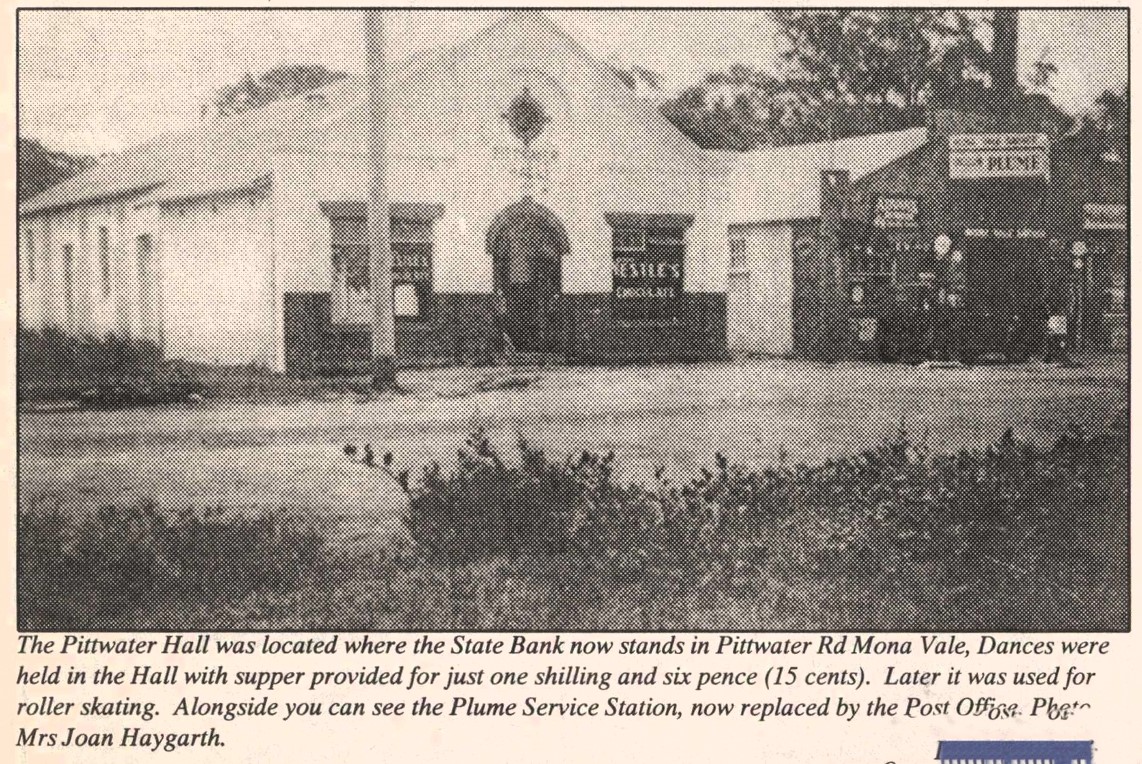
The couple were still working in town, as this little snippet tells us:
Paintings of Orchids.
Sydney Botanic Gardens Museum has received a most attractive donation of orchid paintings from Mr. and Mrs. H. Tristram Squire, and these are now on view at the gardens. It appears that Mr. and Mrs. Squire, both of whom have marked artistic talent, were struck by the beauty of form and color displayed in the hot-houses, and they were given permission to enter and paint the exotic orchids as the various species came to flower. This done, the artists showed their public spirit by presenting practically the whole of the collection to the gardens. The paintings, which represent chiefly the beautiful Dendrobium and Cypripidium orchids, are done in oil on glass and wood, and in every case the work is faithful in execution and sound in atmosphere.
I am glad to learn that Mr. and Mrs. Squire are proposing now, as opportunity offers, to paint native orchids, with the idea of establishing a public collection. This is a most commendable objective, and one that all flower-lovers should aid by Rending native orchids in flower to the artists, at 80 Hunter Street, City. WAYS of the WILD (1925, March 13). The Daily Telegraph (Sydney, NSW : 1883 - 1930), p. 9. Retrieved from http://nla.gov.au/nla.news-article245273259
A Victorian paper ran the same notice, with an alternative spelling of their name:
An interesting gift has been made to the Sydney Botanic Gardens Museum by Mr. and Mrs. H. Trestram Squire, who have, by courtesy of the authorities, been painting the flowering orchids in the hothouses of the gardens. They have donated the series to the museum. These quaint flower-studies are done on glass, and on wood, and make a valuable addition to the treasures collected there. The artists are making special studies of native orchids and blossom, and will appreciate any specimens which can be sent to 80 Hunter street, Sydney. SOCIETY DOINGS IN SYDNEY. (1925, March 21). The Australasian (Melbourne, Vic. : 1864 - 1946), p. 53 (METROPOLITAN EDITION). Retrieved from http://nla.gov.au/nla.news-article140771590
The cement elephants now installed at Bayview Golf Club were sculpted by Mr Harold Squire in the mid 1920s, as seen by an automaton version appearing at the Mona Vale Ball in 1924. They were originally built for John (Jack) and Christina Orr and sat in their front garden, overlooking the golf course, with two being set up to be a fountain. The Orrs and the Squires seem to have become firm friends from the outset and a group of flamingos also featured in their garden overlooking what would become the present day Bayview Golf Course. A search of Construction tenders from 1922 shows a 'Bungalow for Bay View' listed in March 1922, with a city address for the tender to be submitted to.
Around 1920 New Zealand sheep farmer John Orr visited Australia. In 1924 he and his wife Christina (nee Stewart) arrived in Australia and purchased a parcel of land known as the Winnerreremy Swamp in Mona Vale. This was a parcel of 43 and a half acres originally granted to the McIntosh family.
Orr ran sheep on the property (as 'mowers'), and, as he and his wife were golfers, he constructed six holes for their amusement. This was a difficult task amidst swampland, but the Orrs used a punt to drag trees along; mounded dirt up to plant the first fairways; then gradually filled in the rest. One of the main problems was that the tide would bring large amounts of salt water into the swamp twice a day; prompting Orr to design a set of flood gates, which were placed where Pittwater Road crosses Shaw's Creek (now the inlet which crosses the first fairway in front of the green). When the course was built, passers-by enquired as to whether they could play and gradually quite a number of individuals played regularly, and a club was formed in 1926. - Bayview Golf Club History, 'Bayview - Links with a Past' 1998, pp. 11-12; and Swancott, n.d., p. 36 - From; http://www.rta.nsw.gov.au/cgi-bin/index.cgi?action=heritage.show&id=4305013
John 'Jack' also 'Jock' Orr (a Scottish surname) was a keen golfer and it was not long before he had built six holes for his own enjoyment - the layout of these was to his own design - or what would work in with filling in land and reclaiming swamp areas. A generous man he asked others to play added more holes and Mrs. Orr entertained with afternoon tea.
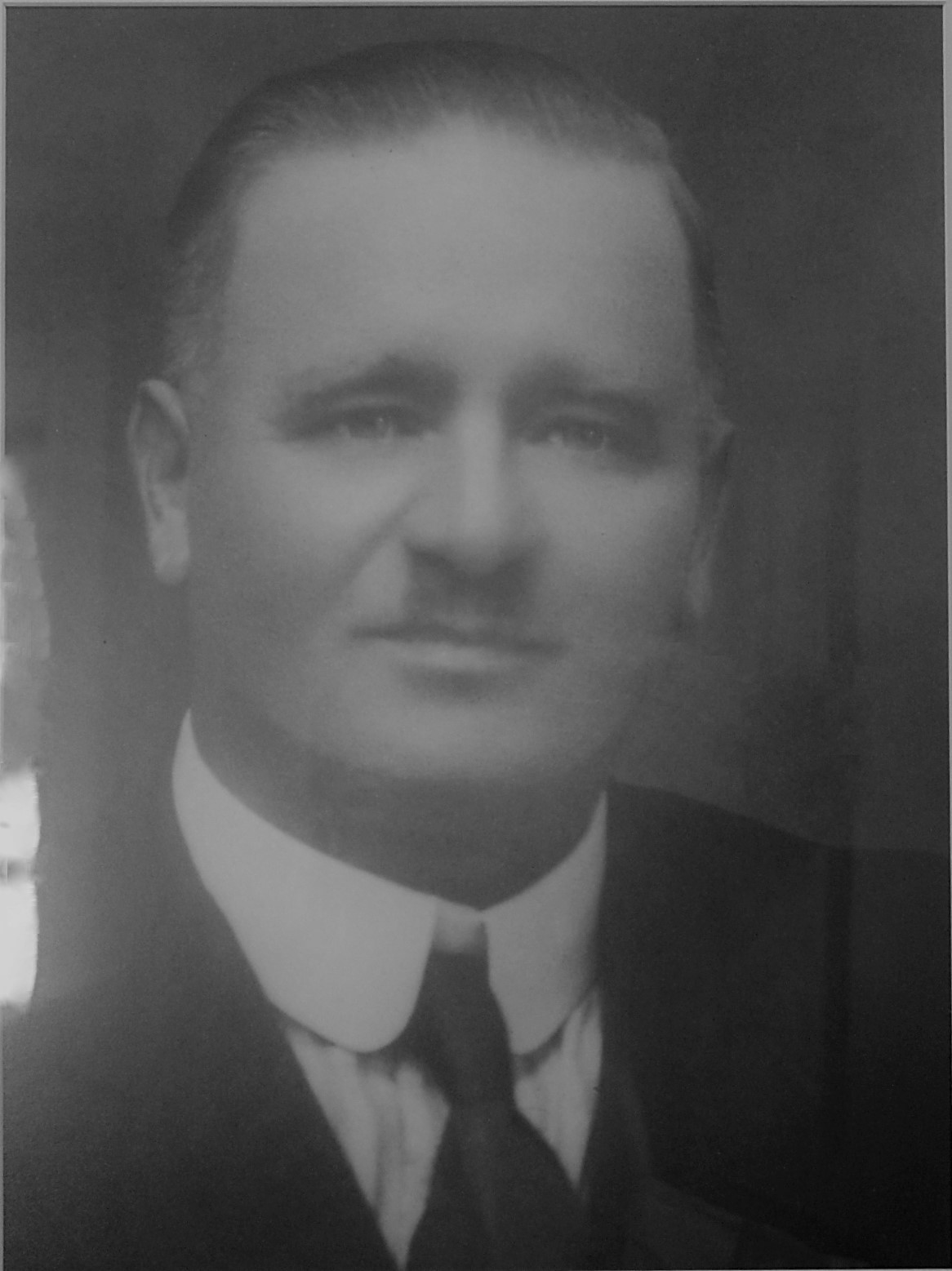
John Orr - a photo taken of a photo in the Bayview Golf Club lobby
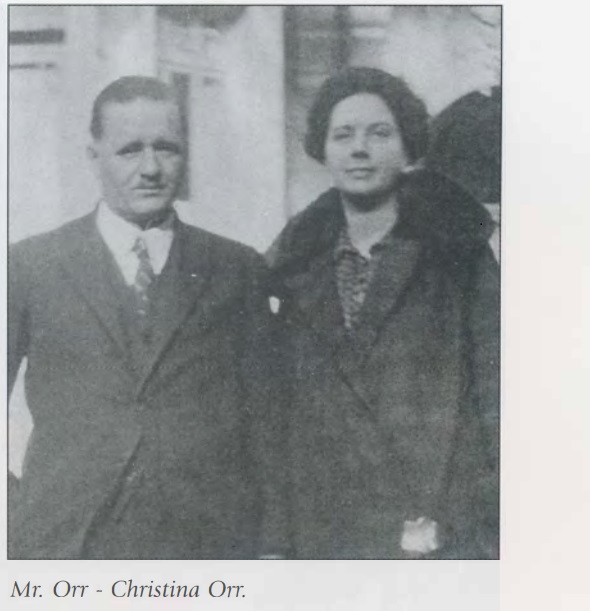
Jack and Christina Orr
.jpg?timestamp=1698691749546)
A group of flamingoes in a Mona Vale Garden, possibly the Orrs home, photo courtesy Olwyn Johnstone - bequeathed to Pittwater Local History Studies Unit at Mona Vale Library
.jpg?timestamp=1698691797631)
The elephants - original placement, and below; showing Bayview Golf Course in the background
.jpg?timestamp=1698691834242)
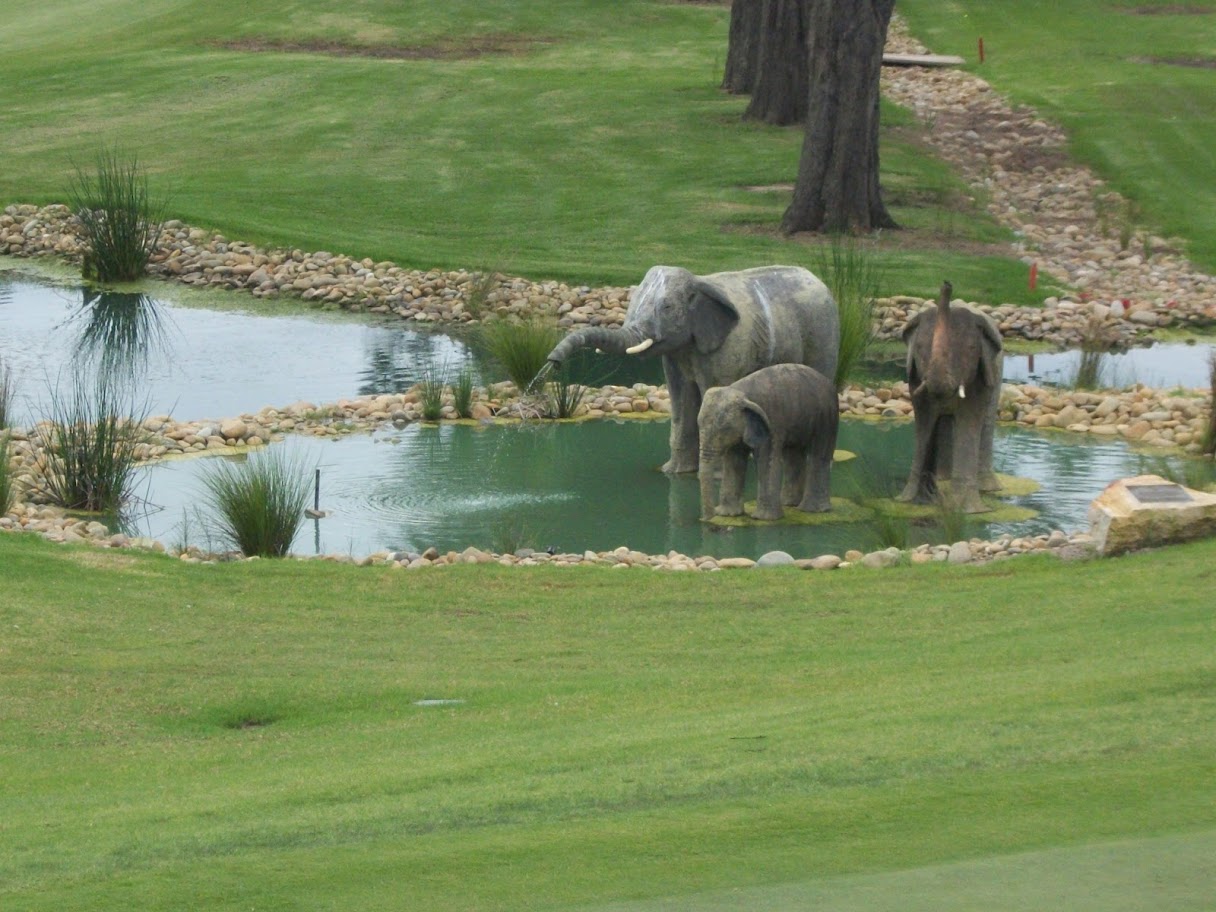
The elephants origins may have been modelled on Wirth Circus elephants, which were just down the road from Harold and Mabel when they first landed in Sydney and may have been seen by them when they were still living in Tasmania:
WIRTH BROS., LTD.,
ZOO AND'HUGE ELEPHANT HERD.
WIRTH'S HIPPODROME. HAYMARKET.
The Greatest Show on Earth.
EVERY EVENING AT 8.
Preceded by a Musical Programme by the Calliope, from 7 to 7.15.
MATINEES, Wednesday. Saturday, and Holidays, 2.30.
Doors open one hour earlier.
Change of Programme.
COMPLETE NEW COMPANY OF MARVELLOUS PERFORMERS.
Specially engaged by Mr. Philip Wirth, on his recent tour of the world.
The Greatest, The Biggest, Show of all time.
PRICES for the Holidays, 7/; Reserved, 1/ extra; 0/, 5/, and 3/, plus tax.
Children Half Price in all parts, except on Saturday nights and Holiday nights.
Box Plan at the Hippodrome. Hippodrome, Tel., City 1234. Advertising (1924, April 21). The Sydney Morning Herald (NSW : 1842 - 1954), p. 2. Retrieved from http://nla.gov.au/nla.news-article16137856
OUR SYDNEY LADIES' LETTER.
FROM A WOMAN'S STANDPOINT.
[By Juliette.]
I always have such funny experiences when I am travelling about, what I mean is that I bear of strange occurrences — perhaps it is that I am so awfully interested in people that I draw their best from them, eh ? I love a circus, when I hear the claque of the riding-master's whip, and hear his 'pola' I feel that I want to be up and away. Now I am going to tell you of two curious tales connected with Wirth's Circus. When the animals were being taken over to Hobart from Sydney in the ' Westralia ' the elephant, behaving in a very story book way, it was secured in a part of the ship near the galley. The cook had to frequently ' pass by the animal. He generally gave the elephant a potato or some other delicacy. One day Mr. Cookey was in a temper, and instead of a tit bit the elephant got some hot water over him. A short time after the cook was passing leisurely by, when the enraged elephant put his trunk out, took up the man round the waist, and flung him to the other side of the deck. ' After that no one dared pass down 1 that way. The cook is still black and blue. … OUR SYDNEY LADIES' LETTER. (1909, February 18). Wellington Times (NSW : 1899 - 1954), p. 6. Retrieved from http://nla.gov.au/nla.news-article141502578
Wirths' elephant herd is the largest of any circus in the world. Fourteen of them— all highly trained— are made to earn their tucker, for Mr. Wirth has taught them to perform transport duties. Many a time they have been almost worth their weight in gold, for circuses do not stick to main roads at times. Each elephant eats a hundredweight of hay a day. See them fight for the flag each day at Wirths' at the Hippodrome. THE TEATRELAND (1925, April 8). Referee (Sydney, NSW : 1886 - 1939), p. 15. Retrieved from http://nla.gov.au/nla.news-article127573415
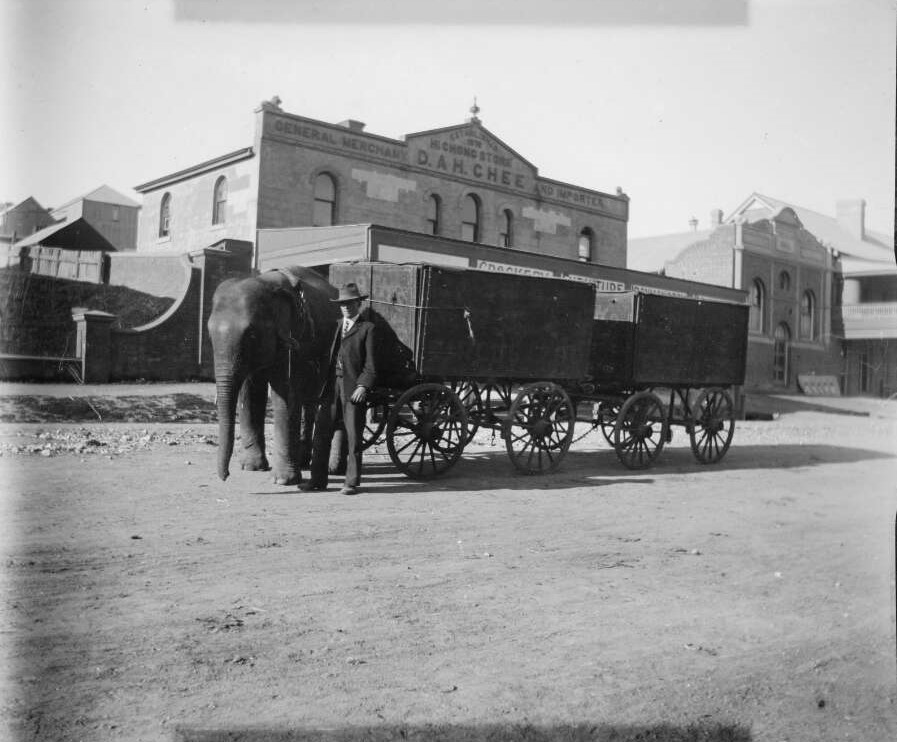
Gabriel, Charles Louis. (1887). Wirth's circus comes to town, Sheridan Street, Gundagai, New South Wales, 2 Taken between 1887 – 1927 Retrieved from http://nla.gov.au/nla.obj-139770353
Probably Mr Squires’ best known work is the 'black boy on the water buffalo cart' which has been restored and could once be seen in E. J. Shaw’s yard on Pittwater Road. The garden at Dungarvon featured many of his native figures and animal sculptures.
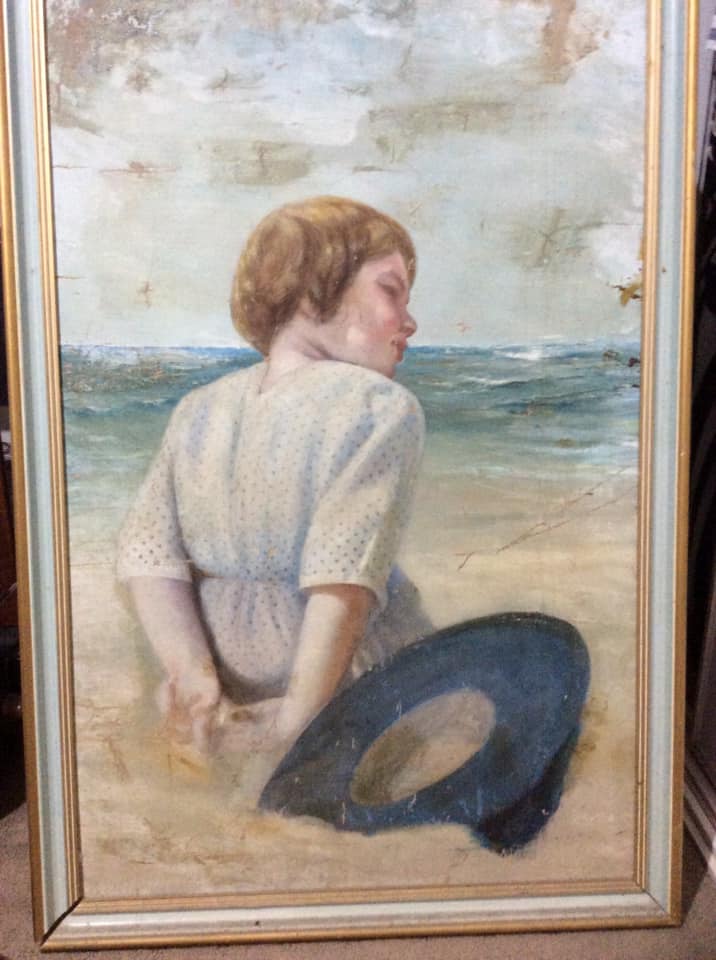
''Larry gives a good description of the place. The painting was on canvas and fitted to the loungeroom wall which had a beach mural so that it appeared as though it was all one mural. Grandad (Fred) took the canvas down and rolled it into a tube as when we moved to Queensland he had plans to sell the house. The murals were peeling.In my bedroom was a semi relief plaster figure of a woman, absolutely beautiful.The statues of aboriginal children and adults were, as Larry said, chicken wire stuffed with newspaper and concreted over, very life like and life size. I have a few photos in mums stuff (sadly passed in 2019) that I could share with you.Grandad said the Squires used to travel to Queensland - a lot and evidence of this could be the travellers palm that used to be in the front yard. In addition to that photos were in the house when grandad bought it of indigenous peoples.I have looked at photos of the house when it was on the market before and must admit I much prefer how it was when we lived there.I have many memories of us kids climbing the massive mulberry tree that was in the back yard close to the kitchen and mum (Gloria) making baking tray sized mulberry pies. There were also mature plum and fig trees in the back yard.''
The H. T. Squire sculpture entitled 'Peter and the water Buffalo' has a bit of a story that goes with it. In ‘Mona Vale Stories', compiled by Guy and Joan Jennings(2007) it is recorded that an elderly farmer Mr. Rundle, who had a roadside fruit and vegetable stall, wanted to improve sales and, as he had previously lived in Darwin and had employed an indigenous Australian by the name of Peter to transport his produce on a cart pulled by a water buffalo, came up with the idea of making a sculpture of the same for his stall.
Harold Tristram Squire was commissioned to make the statue. However, this didn’t work out for Mr. Rundle, who then on sold the statue of Peter and the Water Buffalo to a Mr. Noble, who had a better site, and perhaps could get permission to install the sculpture.
A Life-like Model of a Water Buffalo.

THIS realistic -looking water buffalo and its driver stand near a road-stall on the Pitt water Road, Mona Vale (near Sydney), and are seen by thousands of motorists driving to Palm Beach every week. In the vicinity are many other models — of elephants, kangaroos, flamingoes; in fact, all kinds of animals and birds equally as life-like. Most surprising is the life-size model of an aboriginal standing with poised spear among the bushes at the end of a little-used paddock. The models are the work of a local artist. — N.G. A Life-like Model of a Water Buffalo. a survey and Some Opinions (1938, March 30). Sydney Mail (NSW : 1912 - 1938), p. 6. Retrieved from http://nla.gov.au/nla.news-article166229605
A little about the Rundles and Nobles of Mona Vale during this era:
GOLDEN WEDDINGS.
RUNDLE-STEVENS.-October 10, 1889, at St. Mary's Church of England, Waverley, Sydney, by the Rev. R. McKeown, Henry Alfred George, eldest son of the late Mr. and Mrs. S. H. Rundle, of Beechworth, Victoria, to Mary Edney, eldest daughter of the late Mr. and Mrs. John Stevens, of Beechworth, Victoria. Present address, Mindel, Pittwater Road, Mona Vale. Family Notices (1939, October 21). The Sydney Morning Herald (NSW : 1842 - 1954), p. 14. Retrieved from http://nla.gov.au/nla.news-article17633681
SHIRE TO PAY DAMAGES
GARDENER'S CLAIM
SYDNEY, Friday: A District Court jury, awarded Harold Victor Noble, market gardener, of Mona Vale, £350 damages against Warringah Shire Council. Noble sued the Council oil grounds alleging that as a result of its negligence in maintaining drains, water flowed through his property and caused loss of large quantities of tomato plants and 150 cubic yards of subsoil from his farm. The council denied negligence and alleged contributory negligence. SHIRE TO PAY DAMAGES (1950, May 20). National Advocate (Bathurst, NSW : 1889 - 1954), p. 1. Retrieved from http://nla.gov.au/nla.news-article161221998
NEGLIGENCE CLAIM
Verdict Against Council
A District Court jury yesterday awarded £350 damages to a Mona Vale market gardener against the Warringah Shire Council. The plaintiff, Harold Victor Noble, Ellimatta Road, Mona Vale, said that because of negligence by the Council in the construction and maintenance of road drains, rain water last year flowed through his property destroying thousands of tomato plants.
The Council denied negligence and alleged contributory negligence.
Noble's son, Bruce Victor Noble, who worked the property which his father owns, also claimed damages on his own behalf.
On this claim the jury, by direction of Judge Holt, returned a verdict for the defendant, on the ground that Noble junior was not entitled to damages because he did not own the property. NEGLIGENCE CLAIM (1950, May 19). The Sydney Morning Herald (NSW : 1842 - 1954), p. 5. Retrieved from http://nla.gov.au/nla.news-article27573029
NOBLE.—December 8, 1954, at Manly Hospital, to Betty and Bruce —a daughter (Anne Elizabeth). - Sydney Morning Herald Family Notices
GLASS-HOUSE TOMATO-GROWING AT MONA VALE.
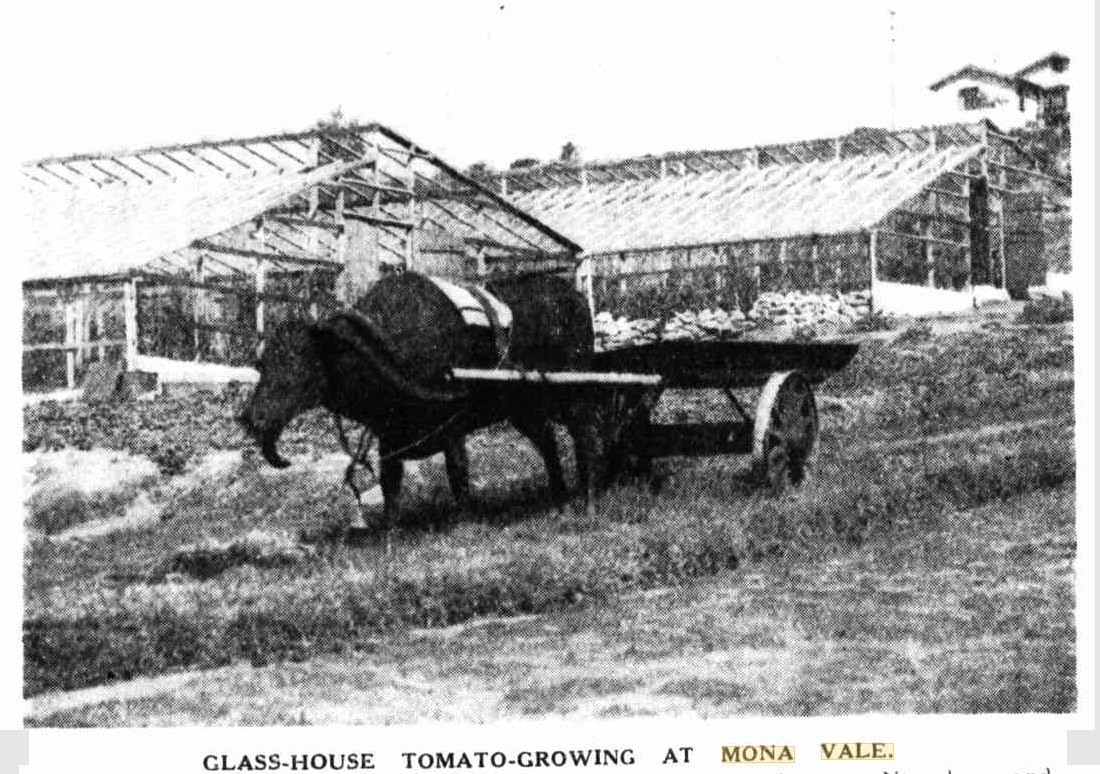
Large quantities of early tomatoes are grown at Mona Vale, between Narrabeen and Newport, Sydney, the glass-house system there having proved very successful. Disease has to be guarded against by stringent precautions and treatment, but, with clean crops, the returns are highly remunerative. The buffalo in the picture, although wonderfully realistic, is made of cement. GLASS-HOUSE TOMATO-GROWING AT MONA VALE. (1938, November 2). Sydney Mail (NSW : 1912 - 1938), p. 39. Retrieved from http://nla.gov.au/nla.news-article166526289
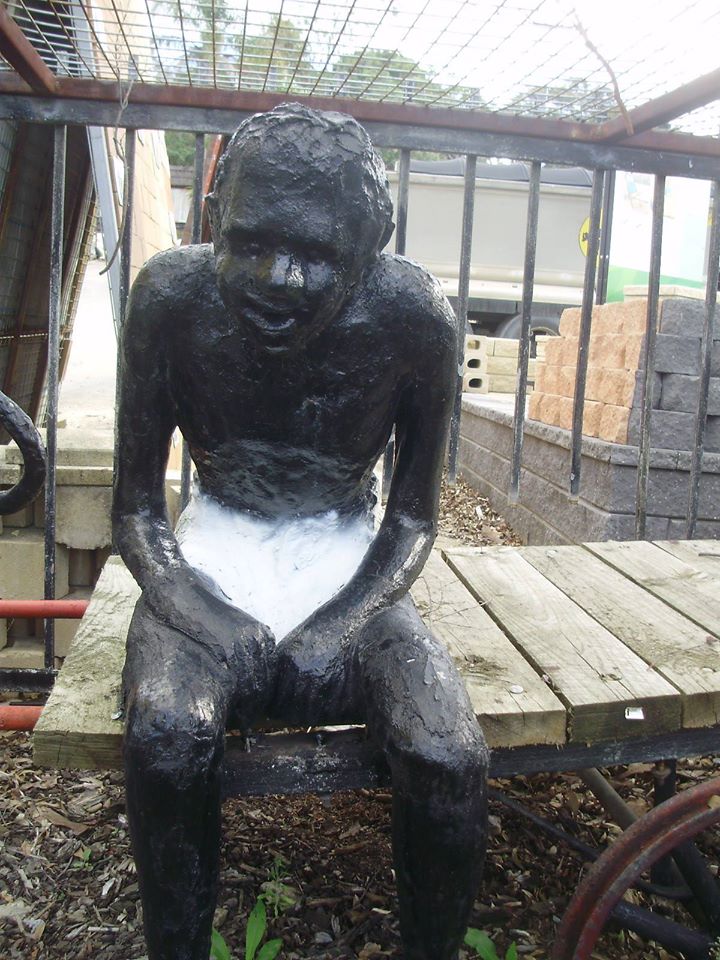
''Peter'' in 2011 photo by and courtesy Dave Murray
''Peter and the water buffalo'' - from Manly Warringah Pittwater Historical Society records - published in Mona Vale Stories by Guy and Joan Jennings - note the difference between the 1930's 'Peter' and that of 2011, particularly around the mouth - it seems there was a substitution somewhere along the way for another of H Tristram Squires' many aboriginal creations.
in place at Dungarvon - courtesy Thompson/Loose/Hargreaves family albums
The Squire sculpture works began to attract the attention of newspapers by 1930:
MONA VALE SCULPTOR'S NOVEL ART IN CONCRETE
At Work on Life-sized Mob of Elephants
Descendant of a family of artists and sculptors, Mr. H. Tristram Squire, of Mona Vale, has turned his ability as a modeller and sculptor in a novel direction.
His home is full of statues in concrete, and a big group on which he is now engaged is that of a life-sized mob of elephants. A flamingo in concrete causes the visitor to pause at the front gate, and a jackass and frilled lizards fraternise with life-like rabbits. Mr. Squire's plaques in concrete are in demand, and he is kept fully occupied at his work.
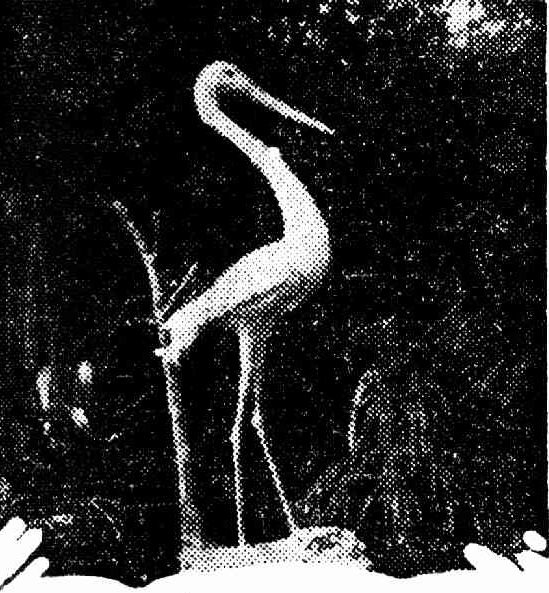
IT WOULD TAKE a big gun to scare this flamingo from his perch. He is a concrete bird.
MONA VALE SCULPTOR'S NOVEL ART IN CONCRETE (1930, May 15). Daily Pictorial (Sydney, NSW : 1930 - 1931), p. 13. Retrieved from http://nla.gov.au/nla.news-article246185285
The plaques Harold Tristram Squire was making must adorn headstones at Mona Vale Cemetery - where he and his wife were eventually laid to rest, and where, surprisingly, although it is known where they were placed, no headstone or plaque is to be found.
Records held by the Bayview Golf Club indicate that a lot of the bird sculptures made by H. Tristram Squire, and the group of elephants currently at tee 18, were commissioned by John and Christina Orr. Mrs. Orr apparently had a passion for birds which she shared with the Squire couple:
She Cultivates Birds
MRS. J. ORR, of Bayview, Pittwater, is a lover of birds, and they have a great time at her beautiful home overlooking Bayview golf links.
Lest the birds be molested, not a cat or dog is allowed on the premises, and, as a result, the wild birds are as trustful as canaries. Butcherbirds roam the verandahs, while smaller birds invade the sunny rooms, and take all sorts of liberties. Mrs. Orr-'is proud also of the fact that her garden is frequented daily by a wild magpie, said to be the only one not in captivity in the district. GOSSIP OF THE TOWN (1930, May 18). Daily Pictorial (Sydney, NSW : 1930 - 1931), p. 7. Retrieved from http://nla.gov.au/nla.news-article246176312
The Atkinson Memorial. Photo courtesy Glenys Hargreave, from the family albums
MR H. M. ATKINSON.
Mr Henry Moncur Atkinson, who died recently at Munnell, Mona Vale, was born in 1839 at Singleton. He was the eldest son of the late James Henry Atkinson, who was well known in the early life of the colony, and who introduced wool scouring into Australia at the Collingwood scour, Liverpool, where he resided for many years.
Mr. H. M. Atkinson had an excellent memory, which remained clear and accurate to the last. He had made three voyages to England before he was 20 years of age, and vividly remembered the departure of troops for the Crimean War.
An accident as a child having destroyed his hearing, he lived a retired life, but always took a keen interest in current events. The late Mrs. Brodhurst-Hill and Miss Louisa S. Atkinson (one-time secretary of the Kindergarten Union of New South Wales) were his sisters. MR. H. M. ATKINSON. (1934, November 21). The Sydney Morning Herald (NSW : 1842 - 1954), p. 10. Retrieved from http://nla.gov.au/nla.news-article17127759
STATUARY STOLEN.
MONA VALE CEMETERY DESECRATED.
A flagrant act of desecration occurred at Mona Vale Cemetery within the past few days, a symbolic statue, the creation of Mr. H. Tristram Squire, having been stolen from the grave of the late Mr. Henry Moncur Atkinson.
About four months ago Mr. Atkinson, a resident of Mona Vale, died at the age of 92, and, as he was an ardent bird-lover, his niece, Mrs. O'Reilly, of Pymble, thought it would be appropriate to perpetuate his memory by a drinking vessel for the native birds with which the Mona Vale district abounds. Mr. Squire, who during recent years has specialised in statuary representing birds, animals, and aborigines, was commissioned, and a fort-night ago he placed on the grave a handsome statue of a stork, five feet high, standing over a large bowl. The latter, which was inscribed with grape leaves, was filled with water for birds to drink from.
Apparently the statuary was only in position a week when the stork disappeared. The bowl was carried a few yards, turned upside-down, and smeared with mud, the thieves apparently intending to disguise its beauty pending an opportunity to return for it. One evening at dusk a man was seen from a distance in the cemetery staggering under a heavy load, with which he drove off in a car. This was evidently the stork, which, being constructed of concrete and reinforced with iron; weighed about a hundredweight. The police, who are investigating the robbery, are puzzled as to the motive of the thieves, since the stork is signed with the sculptor's name.
Mr. Squire's work is familiar to tourists who pass along the road to Bay View and Church Point. His group of elephants is conspicuous at the Bay View golf links, and a family group of aborigines encamped about a natural pond in his grounds causes many a motoring party to stop. STATUARY STOLEN. (1935, April 10). The Sydney Morning Herald (NSW : 1842 - 1954), p. 13. Retrieved from http://nla.gov.au/nla.news-article17157874
GRAVE DESECRATED TABLET UPROOTED
A second act of desecration has occurred at the Mona Vale cemetery following the theft of a statue, the work of Mr. H. Tristram Squire, a fortnight ago.
The statue was a representation of a stork, five feet high which Mr. Squire had modelled and sculptured in cement, and erected over the grave of the late Mr. Henry Moncur Atkinson. Associated with the stork was a large drinking vessel for the native birds, of which Mr. Atkinson was an ardent protector.
After the disappearance of the stork, Mr. Squire tended the grave. He visited the cemetery again yesterday and found that the grave had been disturbed. The tablet inscribed with the name of Mr Atkinson had been torn from the ground and was upside down. The drinking bowl, a handsome engraved vessel, 15 inches in depth and two feet across, was lying on the grass. GRAVE DESECRATED. (1935, April 19).The Sydney Morning Herald (NSW : 1842 - 1954), p. 8. Retrieved from http://nla.gov.au/nla.news-article17168390
Clearly Mr. Squire made some attempt to restore the original memorial or the above photo is one of those Glenys' mum Gloria thought may have been taken by the Artists themselves.
Why The Spear Was Stayed —
STORY OF GRIT AND SILENCE
"EVERY muscle tense, an aboriginal chieftain stood poised over a pond in a Mona Vale garden yesterday, his hunting spear drawn back for the deadly thrust. Although the carp beneath him was an easy target, the spear was not launched, for realistic though the figure is, it is made of cement, not flesh and blood. He is one of the many works modeled by Mr. H. Tristram Squire, whose garden is filled with life-like representations. Kangaroo and wallaby, lizard and snake are mingled with a dozen flamingoes, whilst a group of children stand quietly looking on.
The interior of the house is no less remarkable than the garden.
"Blank walls are hard and damaging to the sight," said Mr. Tristram Squire yesterday, whose walls are painted to represent land and seascapes. "The effect of a distant scene keeps the eye at a more or less natural range."
Mr. Squire told of a large, black snake that he recently made for a friend, who placed it in a natural position among some bushes in his garden. The next morning the snake was smashed by an alarmed milkman.
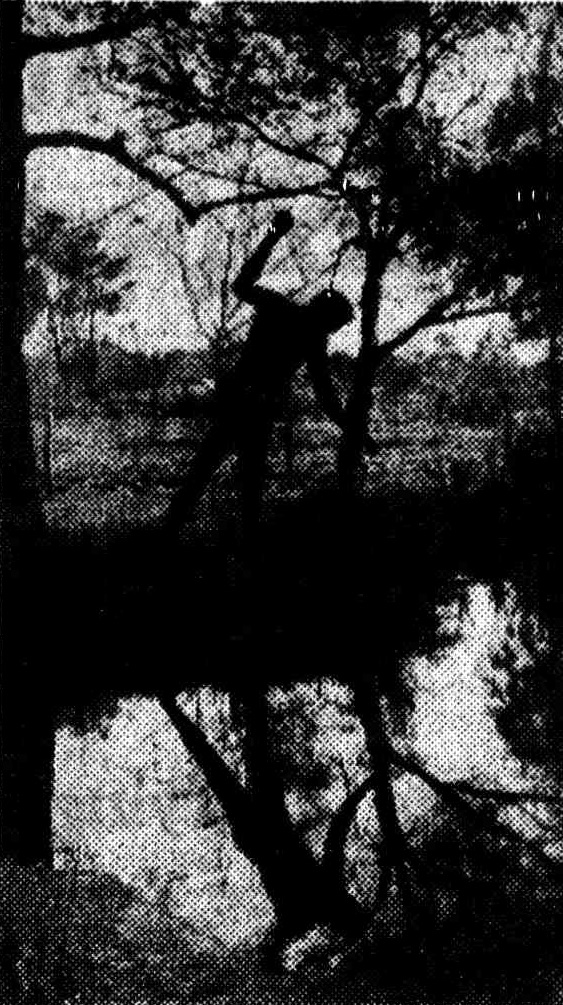
MR. SQUIRE'S immobile aboriginal.
Why The Spear Was Stayed (1935, May 14). The Daily Telegraph (Sydney, NSW : 1931 - 1954), p. 7. Retrieved May from http://nla.gov.au/nla.news-article246472427Warringah Shire Council Minutes of Meetings records:
39. H. Tristram Squire, 9/6/37, requesting permission to place his statuary group - "blackfellow spearing water buffalo", at the intersection of Park Street, Bassett Street and Bayview Road. Resolved;- That he be granted permission. (Crs. Hewitt, McPaul)
BLACKFELLOW STATUE REFUSED
Permission for the erection of a statue of a blackfellow spearing a water-buffalo, at the intersection of Park, Bassetts, and Bayview Roads, Mona Vale, has been refused by Main Roads Board. One reason given was that the policy of the board was against the placing of objects on the road which might distract a driver's attention. The statue is a life-size one by a Mona Vale sculptor, Mr. H. Tristram Squire. BLACKFELLOW STATUE REFUSED (1937, June 17). The Daily Telegraph (Sydney, NSW : 1931 - 1954), p. 3. Retrieved from http://nla.gov.au/nla.news-article247138983
17. Tristram Squire, 19/1/38, declining to erect his statuary in the position suggested by the Main Roads Department, but offering to remodel the water-trough at Bayview Road-Newport Road junction "combining the water-trough's utility with a handsome and-original setting', designs of which work may be seen at his address. Resolved, - That the Main Roads Department be asked to approve of the proposal. (Crs. Latham', Batho)
.jpg?timestamp=1698691910924)
Harold's work in the backyard of Dungarvon - from in place at Dungarvon photos - courtesy Thompson/Loose/Hargreaves family albums
More of those works in place at Dungarvon - courtesy Thompson/Loose/Hargreaves family albums, certainly show a love for our First Nations peoples doing what they did in this place, and across Australia. Although those Charles Kerry and Henry King photos, reportedly taken in the 1890's and said to be of members of a 19th century Aboriginal and Torres Strait Islander 'performance troupe' being exploited, and then abandoned by one Archibald Meston (1851–1924), who oversaw the removal of hundreds of Aboriginal people from their lands in the centre, south and south-west of Queensland, to near-coastal reserves in south-east Queensland, there are some earlier records by some of the first European families to live in the Mona Vale to Church Point and western shores areas who recall seeing some of what was represented in the Squire works found at Dungarvon into the 1960s.
Ann Shaw, who was Ann Oliver originally, a daughter of William Oliver, found the Squire sculptures 'lifelike' and liked having one that was near her property, of the young man poised with a spear above a pool, as it reminded her of someone she knew who would fish this way within her living memory and clearly had love for.
An extract from Mr. Wheeler's Early Days of Bayview (published 1940) provides a physical description and some of those he recalled being in these places;-
At the head of the bay is the Newport “Maze,’’ a channel running into a tangle of mangroves, finishing in a swamp up near Bayview Road. A book of adventure — Drowning Maze —was written about this area by Miss Jean Curlewis. The Sydney Morning Herald commented as follows:
Visitors to Pittwater are acquainted with the intricate tangle of scrub and channel at the Newport end, but they probably have no suspicion of the exciting things that happen in this eerie locality. Miss Curlewis lets them into some of its intriguing secrets.
To the west of The Maze is Shaw’s Creek. I often saw old Jack Shaw stealing along silently in his ketch about dusk up McCarr’s Creek, like the “Old Grey Man of the Sea.”
After traversing the terrain outlined in the preceding paragraphs, I gathered that Governor Phillip and his party camped on the evening of August 24, 1788, half a mile to the south of the lofty eminence which towers above Bungan Beach. There is a long vale in this locality situated just to the north-west of Bongin-Bongin, or, as it is now generally called, Mona Vale Beach, and many Cabbage tree palms are still to be seen there. Phillip and three members of his party walked to the top of the eminence (now called “Bushranger” trigonometrical survey station, 321 feet) just before dusk, and saw the southern part of Pittwater extending from Winnijimmi (Newport) to Church Point. The freshwater river that they explored the next day would be Shaw’s Creek, Bayview, and the swamp in which it took its rise was known one hundred years ago as Winnereremy. A map in the Department of Lands shows the entrance to that creek as Winni Jenny, and this name and Winnijimmi are probable corruptions of Winnereremy.
Close at hand is the home of Mr and Mrs James Shaw, pioneers of the district. Mrs Shaw, who was formerly Miss Ann Oliver, was born on the peninsula, Lovett Bay, in 1856. Before that, her father, William Oliver, lived in a cottage on Cape’s Flat, near the Fig-tree, the site of which has been swallowed up by encroaching tides.
Mrs Shaw told me that she had a vivid recollection of a black fellow spearing fish under a mangrove on the point of the flat just below Baker’s orchard. That was when she was a young girl. “I can see that blackfellow now,” said she, “with the fish quivering on the spear just as I see the leaves shaking on that tree.”
On the bank of the small creek near the Bayview Post Office a blackboy who nursed her brother Tom was buried. Mrs Shaw said that probably the grave was covered over when the road was made to Church Point.
Local anecdotes state this gravesite was on the Roche property at Bayview, and that this unnamed First Nations man had been well-known and well-loved in the Bayview-Church Point and Bayview areas. The story handed down to children of these earlier residents state the reason this occurred was the unnamed gentleman, obviously a part of the community for years by then, 'could not be placed in the cemetery' at Church Point.
Other records in the pages of the past newspapers record that similar burial sites of the local First Nations peoples occurred alongside creeks at Newport and Mona Vale, and in sand dunes. Clearly there was a cultural practice of doing this for the Indigenous peoples of Pittwater.
Still others recall there was an aboriginal clan group that still resided along this stretch to Winnererremy Bay and had a camp and home on Darley street, backing on to the Squire home, or at least close to them. Although they may have been shunned by some, others would not have been so, as shown by Ann Shaw's recollections.
The commission of 'Peter and the Bullock' could not have been the sole explanation for the profusion of these 'statuary' works focused on indigenous peoples in situ by H T Squire. Having lived in the rural areas of Victoria he and his wife Mabel must have had had a lifetime of contact with First Nations people long before they reached Mona Vale.
The works completed certainly evince a respect for, and even love for their subjects, and this is years before that historic first exhibition in 1937 by the most famous of the first aboriginal watercolour painters, Albert Namatjira.
This also predates those stylised versions of representing First Nations peoples by Manly lady Viola Browning, although her works did commence appearing as drawings done by a teenager in the late 1930's as well, years before they became available on plates as tourist ceramics.
There does not seem to be a huge market for European interpretations and representations of First Nations peoples in the 1920's and 1930's - only those who loved them or wanted to remember them worked to fill the landscape with facsimiles. Likewise, any artworks created by First Nations peoples were placed in museums, not art galleries, and were 'interpreted' from a position of being subjects for anthropological study.
However, H Tristram Squire clearly had another tack and pursued it. That these works stayed in place decades after he had passed away speaks to how they were regarded by locals.
His fine and delicate work remains with us in these treasures - thanks to Bayview Golf Club - and now, thanks to the generosity of the Loose-Thompson-Hargreaves in sharing what they have of these old records. Some of the delight or fear Mona Vale children must have had in visiting these premises, as well as background glimpses into the way that corner of Mona Vale out to Bayview and Church Point was before road expansions and homes being built, the creek, the ponds, the landscape and what was growing there can be seen.
Along with the Squire record of those they clearly met along the long and winding way to Mona Vale, you have to wonder; was 'Har' rushing to make an accurate record and tribute of something he could see disappearing?
A few more of those works, as kept by this wonderful former Mona Vale family - courtesy Thompson/Loose/Hargreaves family albums, and possibly taken by H Tristram Squire in some cases, or a friend with a box Brownie to take these very small photographs, to both make a record and 'examples of' his works to be sent out to newspapers and prospective clients.
After all, Artists are among the few careers that don't retire, and can be found with pen or paintbrush in hand unto the last breath if their bodies let them:
This is the Orrs home and the stork sculptures made for them:
Back to the backyard at Dungarvon
Planters for the Bayview golf club?:
Harold Tristram Squire passed away on May 16th 1938 and was interred at Mona Vale Cemetery, Section A of the Anglican section, on the 18th of May. The Sydney Morning Herald ran this Tribute 10 days later:
OBITUARY.
MR. H. TRISTRAM SQUIRE.
Mr. H. Tristram Squire, of Mona Vale, died this week, aged 69 years. Mr. Squire was a native of Victoria, and as a youth studied art with Sir John Longstaff and Sir Arthur Streeton.
He developed especially as a portrait painter and sculptor, and in recent years devoted much time to modelling of life-sized figures and groups of animals. In the garden of his home at Mona Vale are several groups of aborigines one of which depicts black-fellows spearing fish in a natural pool.
Mr Squire was a lover of animals. His garden is the home of opossums, wallabies, kookaburras and aviary birds, many of which would perch fearlessly upon him. He is survived by Mrs. Squire, who is also an artist. OBITUARY. MR. H. TRISTRAM SQUIRE. (1938, May 28). The Sydney Morning Herald (NSW : 1842 - 1954), p. 16. Retrieved from http://nla.gov.au/nla.news-article17469079
His works were still appearing in newspapers and remain, in Peter and the Water Buffalo, and the Bayview Golf Club elephants on Hole 18, part of the places he once strolled through and a tribute to those who came before us, marked with respect in the case of Bayview Golf Club and perhaps symbolic of the friendship between the Orrs and the Squire couple, who had been married for close to 48 years by the time Harold passed away, and had been among some of the great shifts Australia went through from the 1850's on.
Mabel continued to live at Mona Vale - and continued in her Art Practice in many ways. The Australian National Archives records:
AUTHOR Mabel Eunice Squire : ADDRESS Sydney : TITLE OF WORK ''Universal Maps of the Heavens for Any Latitude or Place'': TYPE OF WORK Literary : APPLICANT Mabel Eunice Squire : DATE OF APPLICATION 13 Aug 1931 : DATE COPYRIGHT REGISTERED 18 Aug 1931 : WORK ENCLOSED? Yes. 1931 - 1931
A universal map, represents the whole surface of the earth and sea; such is ... all places, except seas, woods, and deserts, are here laid down. No record of this work being published, or the artworks it contains, could be found.
Her friendship with Christina Orr persisted even after her husband 'Jack' Orr passed away, with anecdotes published in Guy and Joan Jennings' ''Mona Vale Stories'' and the Bayview Golf Club's Histories speaking of Christina sending butter to the Squire home during WWII when such foods were rationed and scarce and that the garden remained filled with his works, scaring the small local children sent forth on this butter delivering mission.
ORR.-November 3, 1941, John Orr, of Bayview and Papakura, Gisborne, New Zealand, and loving husband of Christina Orr, and second son of the late Mr. and Mrs. John Kirrit Orr, of Hawkes Bay, New Zealand. Family Notices (1941, November 4). The Sydney Morning Herald (NSW : 1842 - 1954), p. 15. Retrieved from http://nla.gov.au/nla.news-article17771998
Mabel's sister Beatrice Annie Harvey passed away at Ryde in 1943. Her sister Helen(e) passed away in 1927, with her death registered at 'Manly'.
Mabel Eunice Squire passed away on the 27th of March 1957, aged 92, and was buried with her husband on March 29th.
Despite his work at making 'plaques' no headstone or plaque marks their final resting place in Mona Vale Cemetery at present - any that was there has gone. Their graves are in the old section of the cemetery 'COE-A-000' (Church of England), marked by driven into the ground yellow pegs where council has identified remains of them, and others, but with any memorials that had been present gone - perhaps the victims of yet more thieves and vandals in a place where all visitors entering should do so with great respect.
Or perhaps there was simply no one left to erect a proper marker for them, and no provision made for the same, despite the great number of works that remained on the property at Dungarvon, Mona Vale, to greet the next residents of the home.
An exhaustive search over a few years failed to find any of their earlier paintings, despite good descriptions of them, and Harolds' in particular as having a red haired girl in one, a good understanding of perspective and filling frames with light, and being proficient at 'fine, delicate and detailed' work.
With 58 years of work done by the time he and Mabel and her sisters left this mortal plane, it seems all those paintings must be held in private collections and considered too good to resell, or perhaps their seeking the light in backroads, the moonlight along rivers, and rural peace instead of cultivating society and publicity means those who hold their works, signed, are unaware of the long road travelled from there to here to give them such visions and that they hold something of greater value than what would appear at first glance.
References:
- Harold Tristram Squire: October 28, 1868 - May 16,1938 - Artist
- Taramatta-Turrimetta-Turimetta Park, Mona Vale
- Section Of A Squire Mural From Dungarvon, Mona Vale, Held In Private Collection + A Few Notes About His Focus On In Situ Aboriginal Sculptures & Local Burial Grounds Of First Nations Peoples
- The Oaks - La Corniche
- Mona Vale Public School 1906 To 2012
- Pittwater Roads II: Where The Streets Have Your Name - Mona Vale, Bongin Bongin, Turimetta and Rock Lily
Harold Tristram Squire Sculptures-Statues At Dungarvon, Mona Vale - by A J Guesdon, 2024